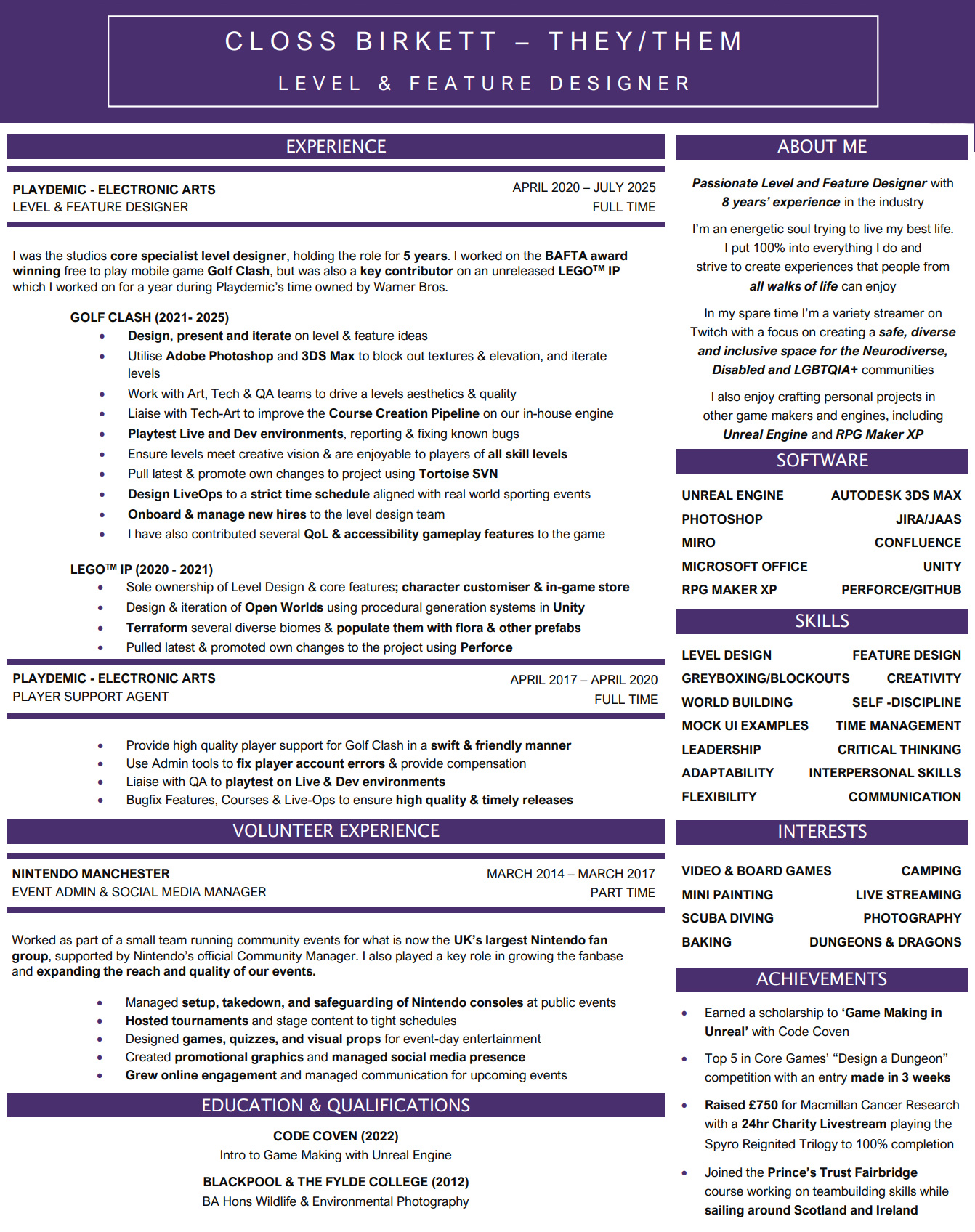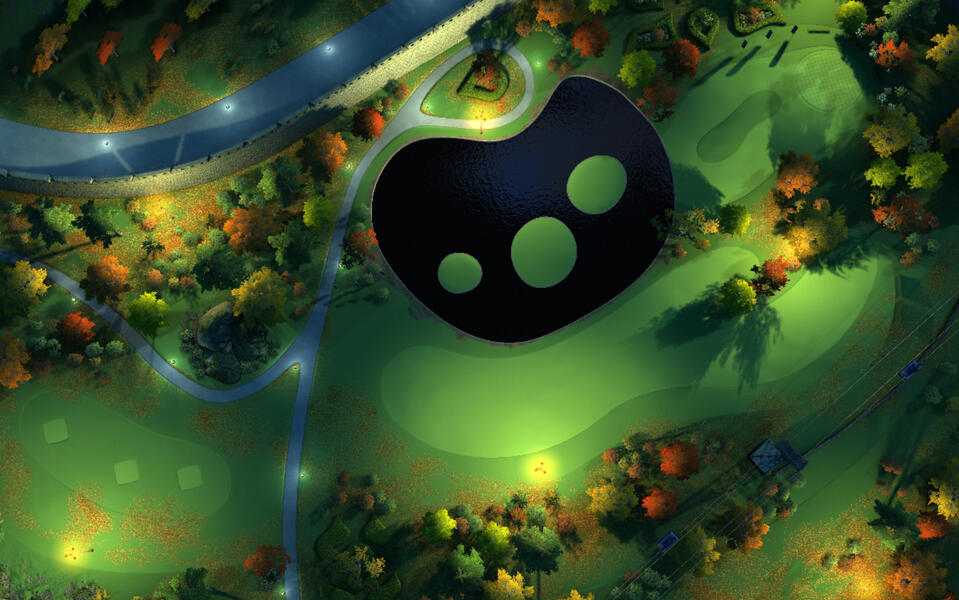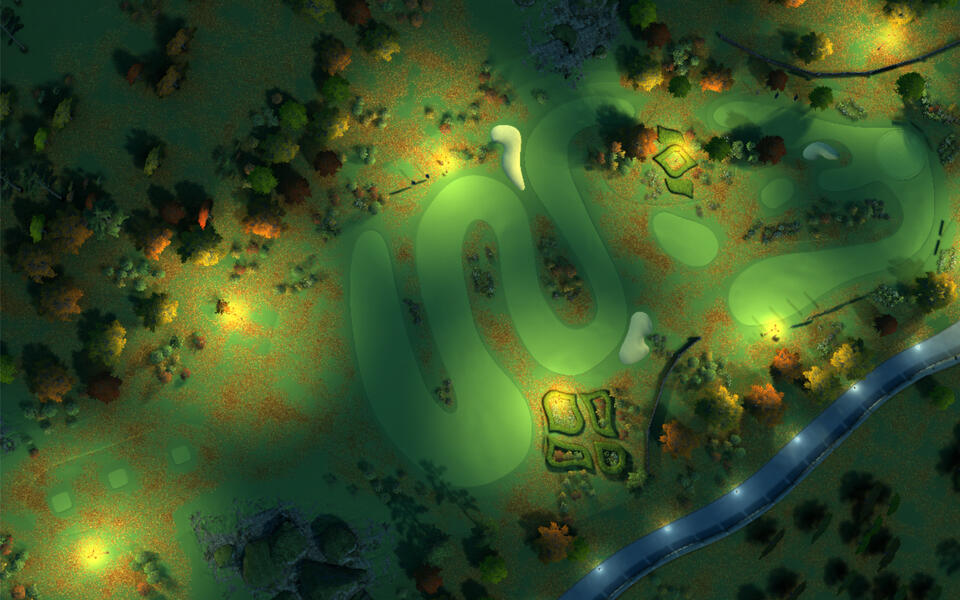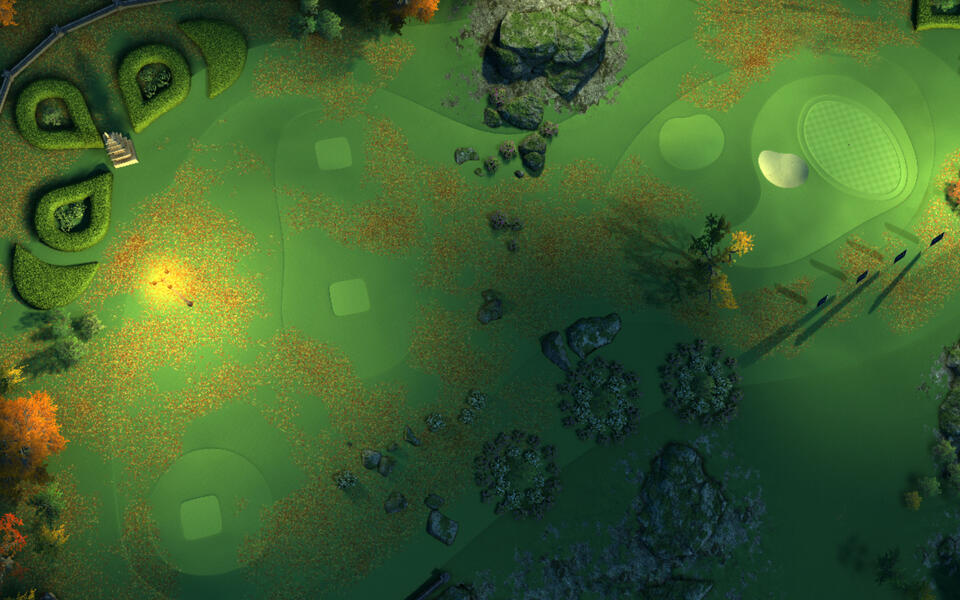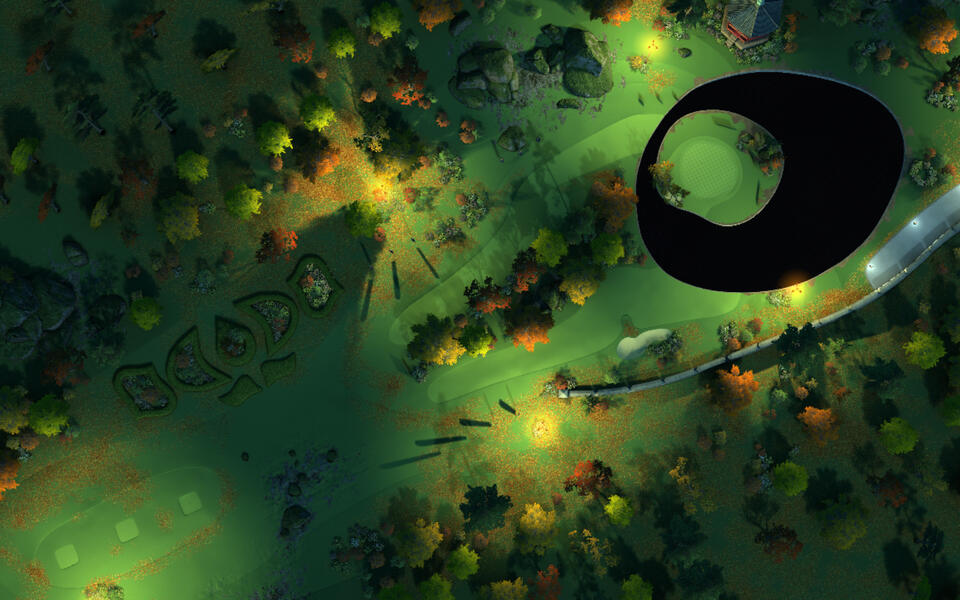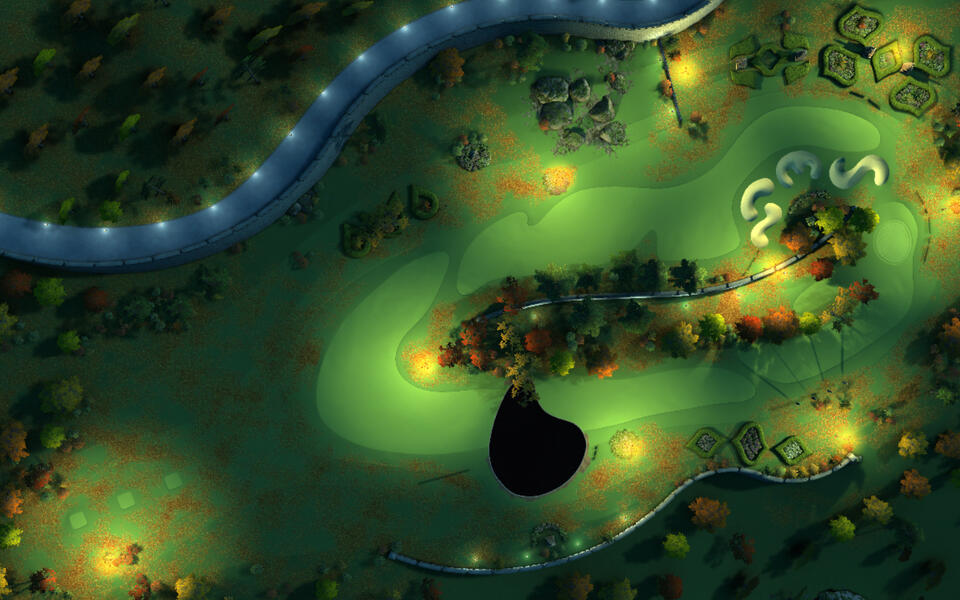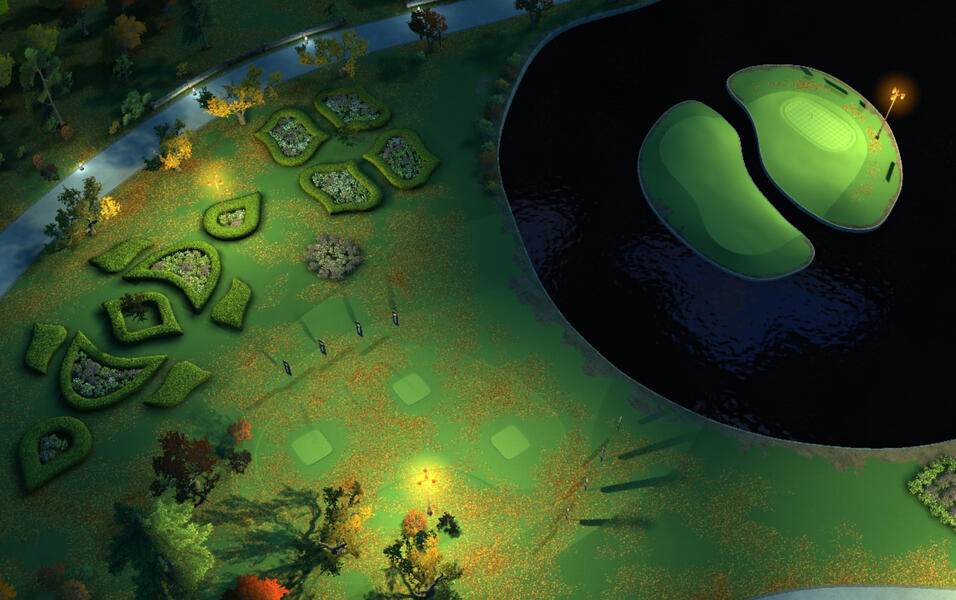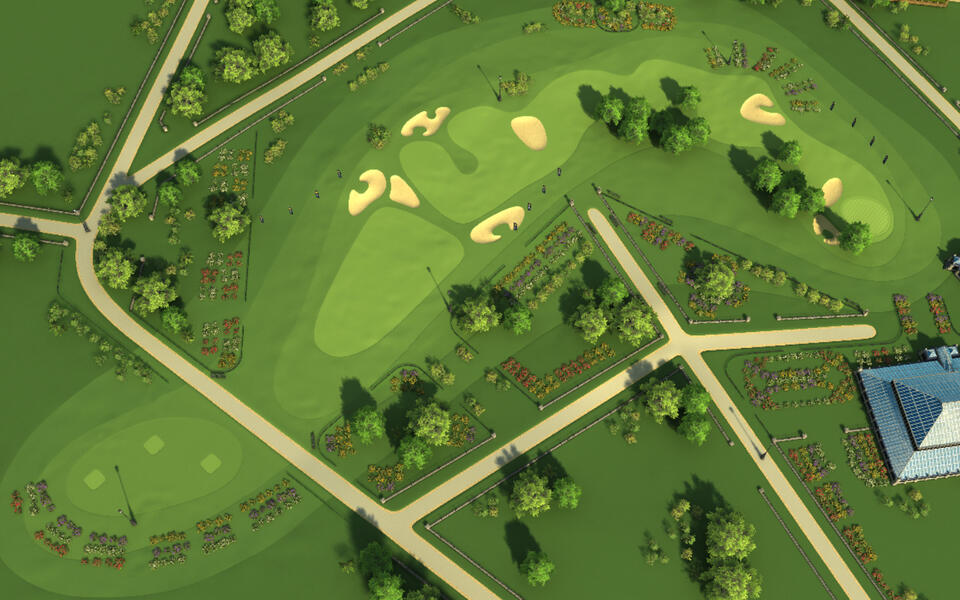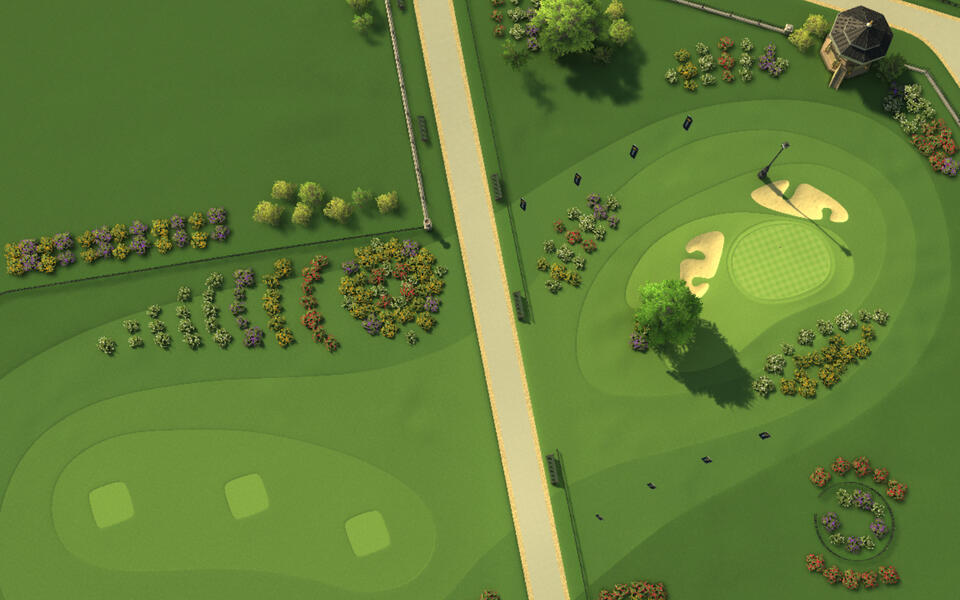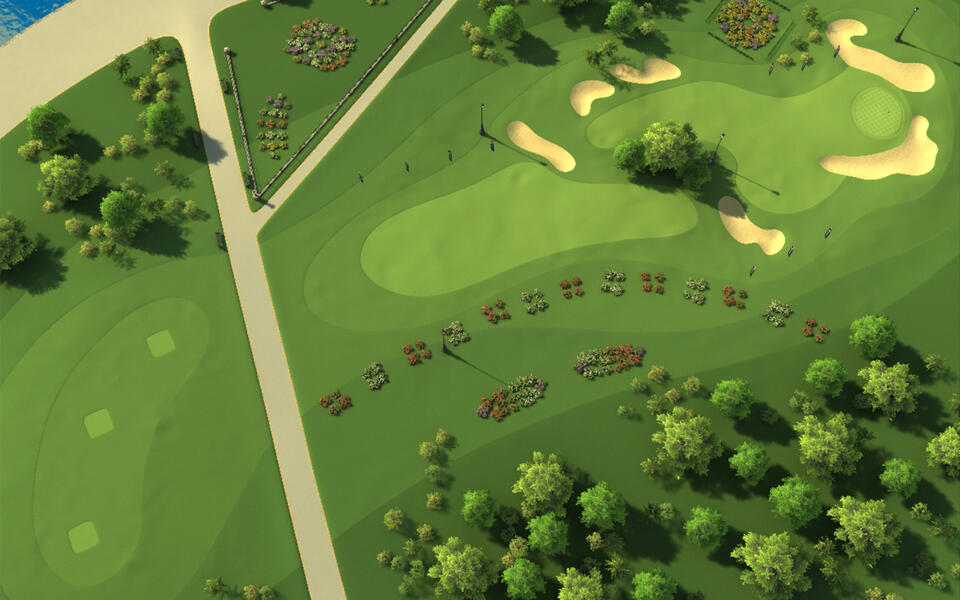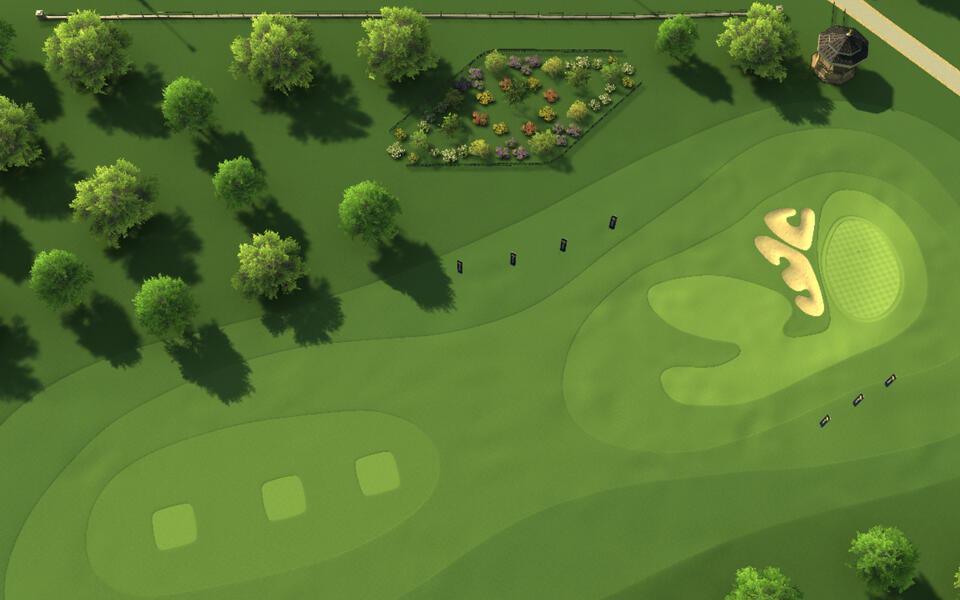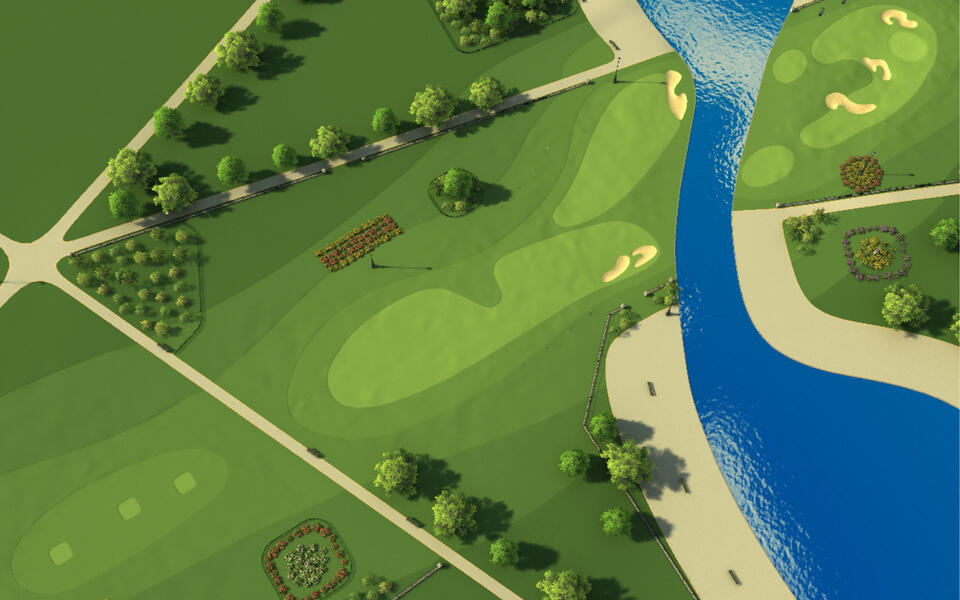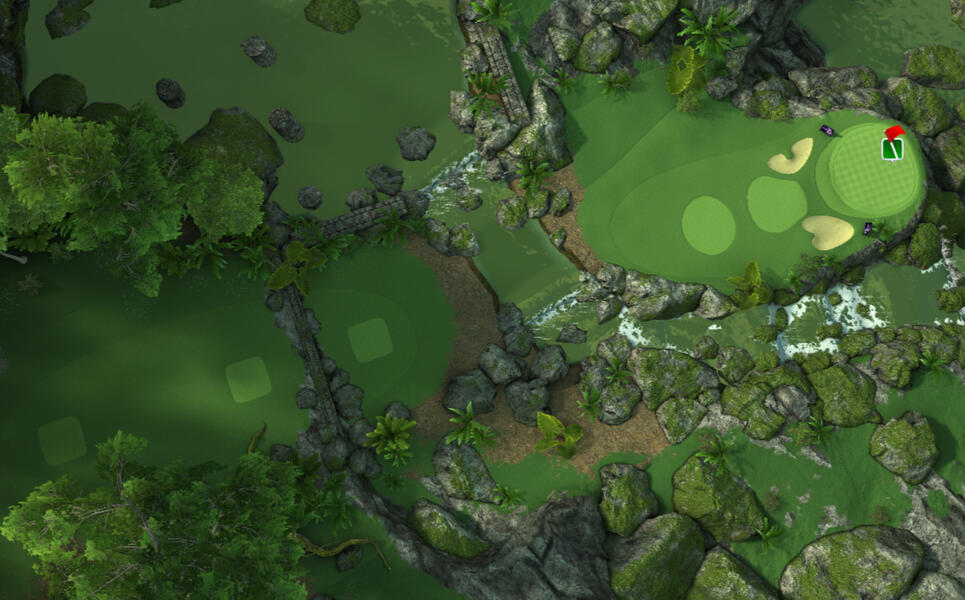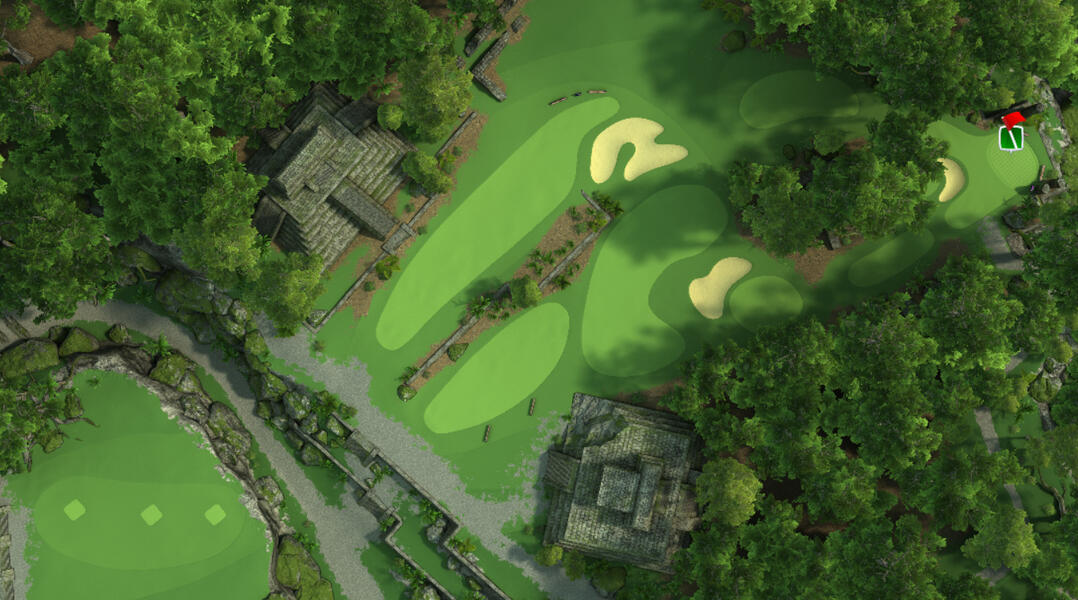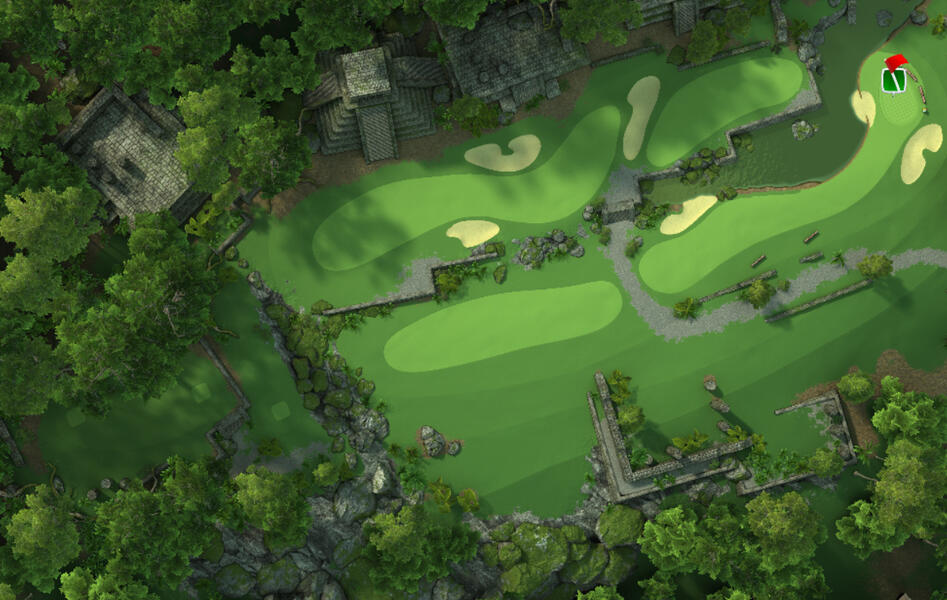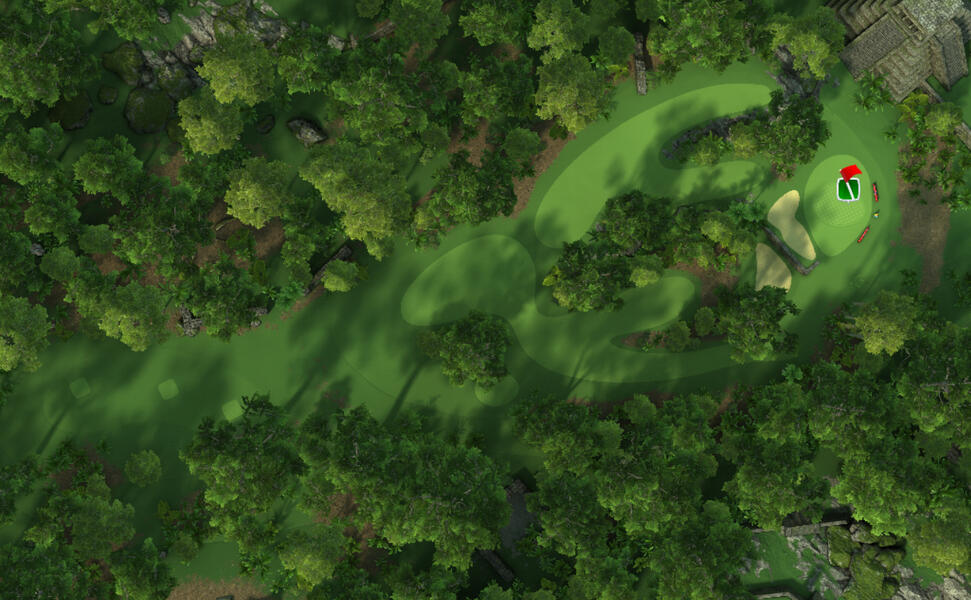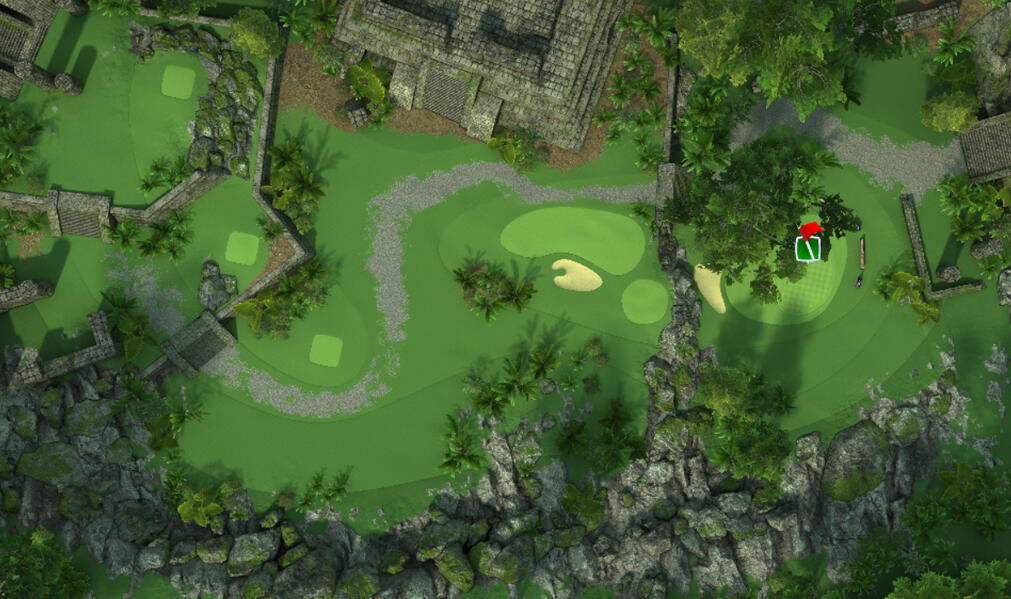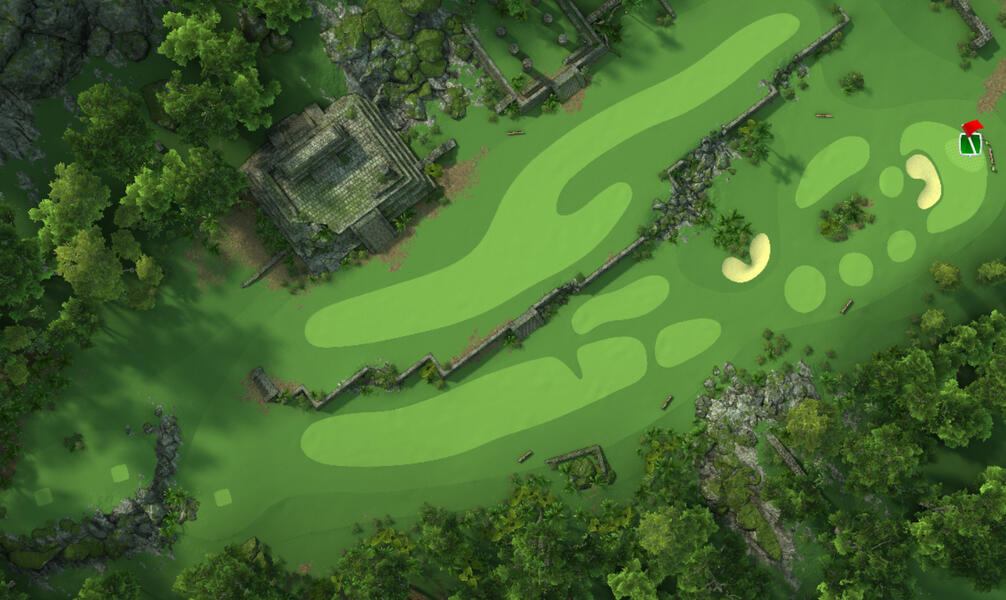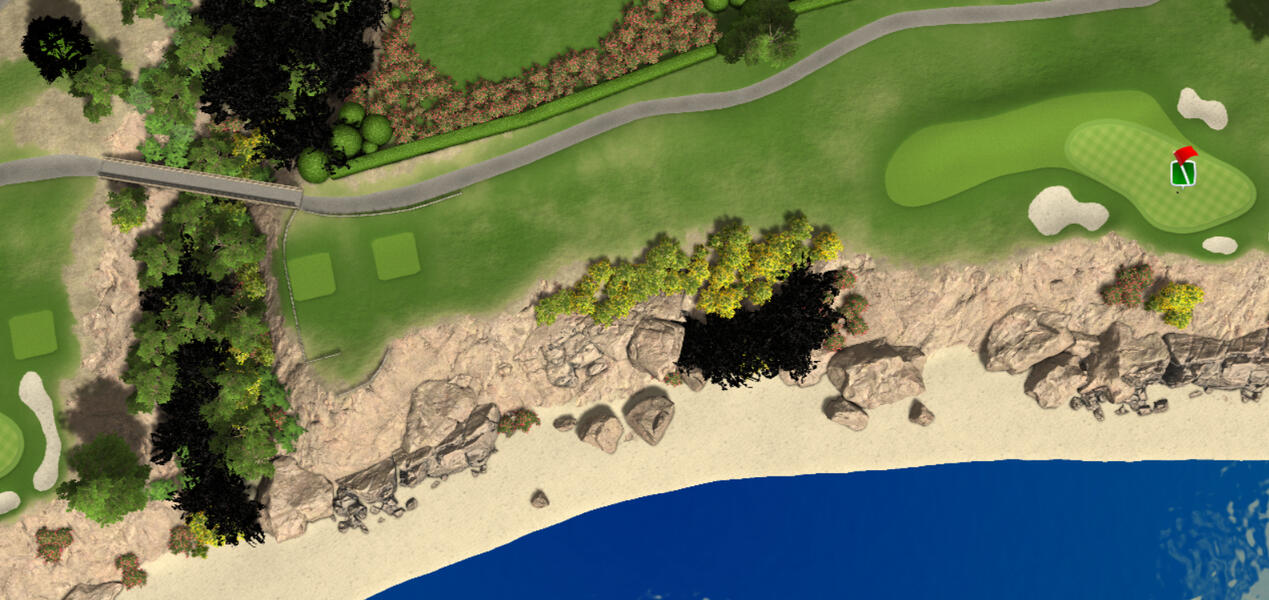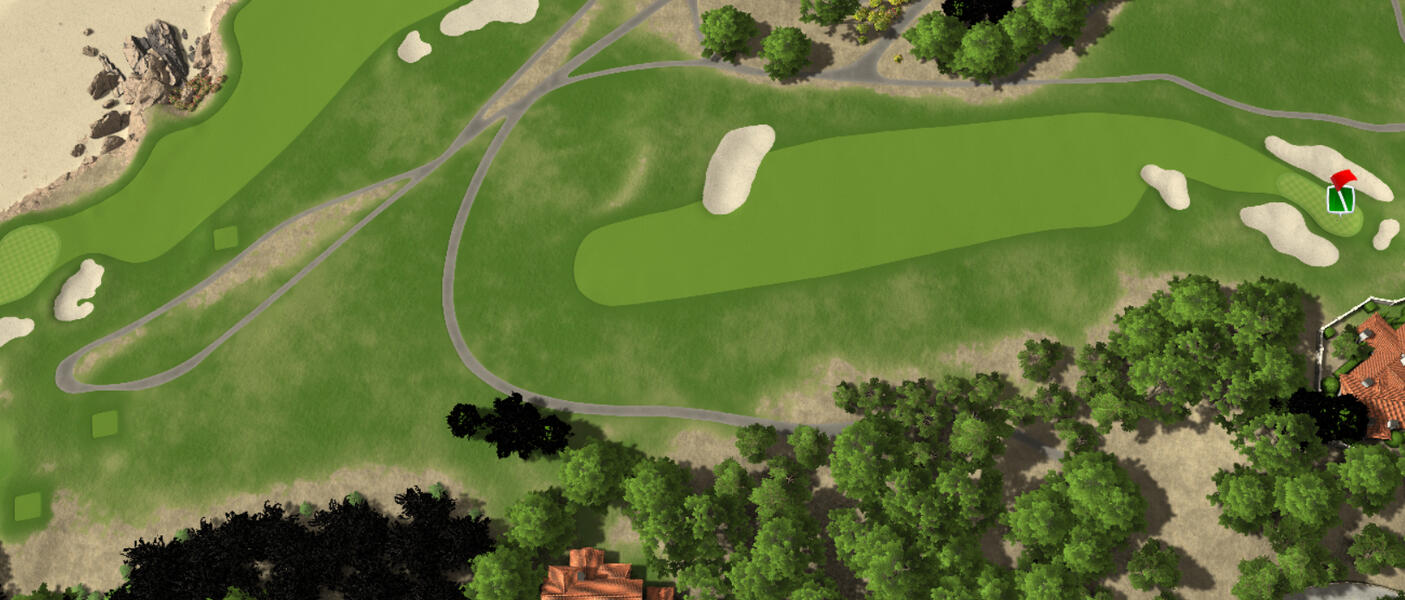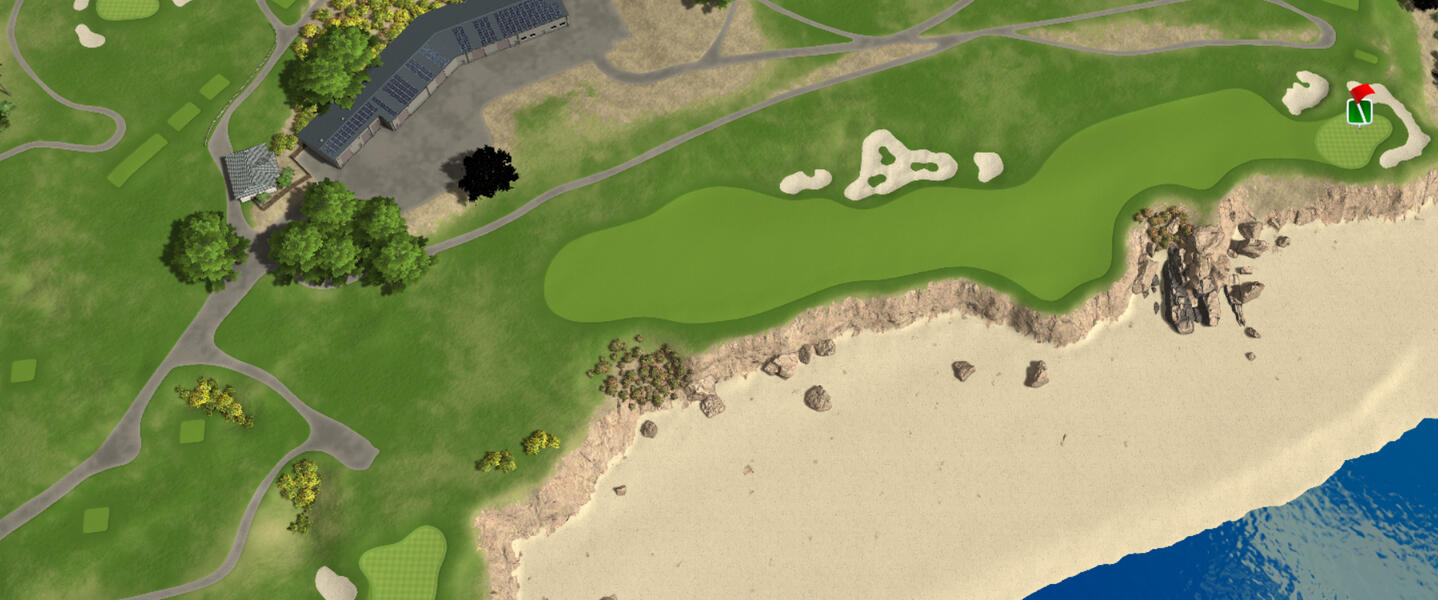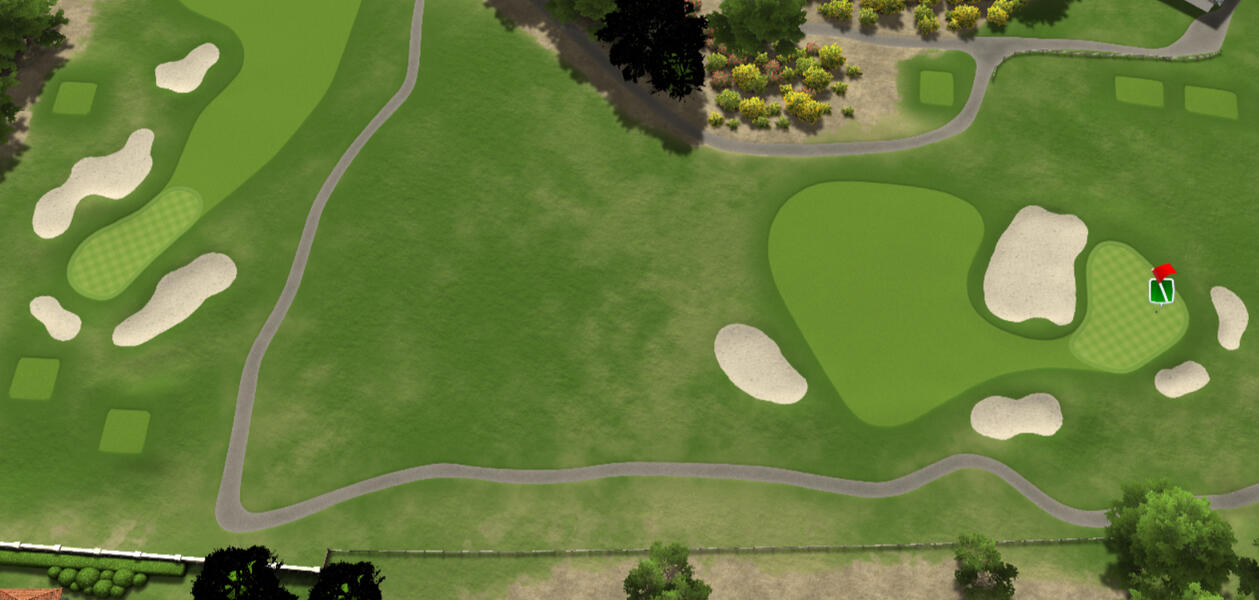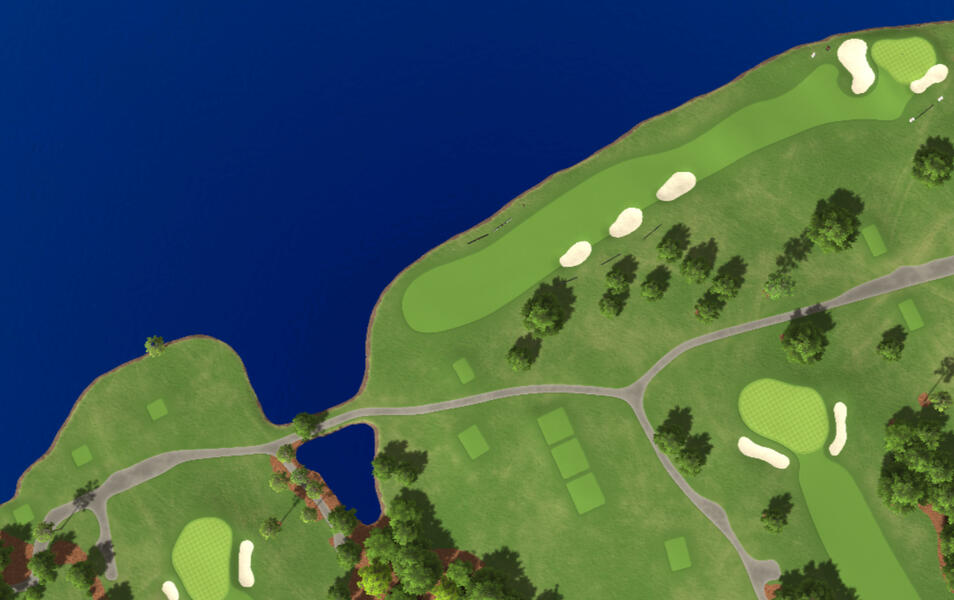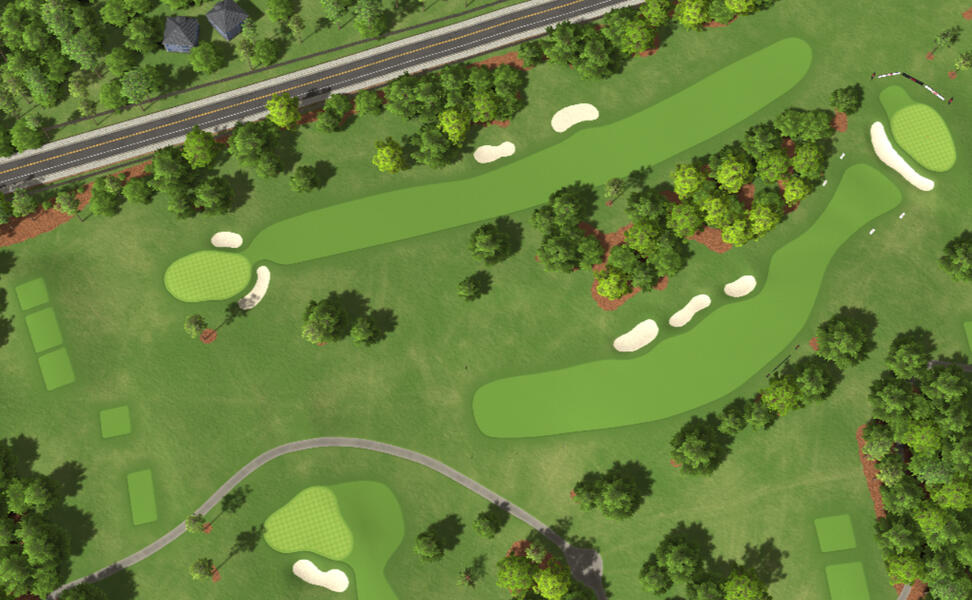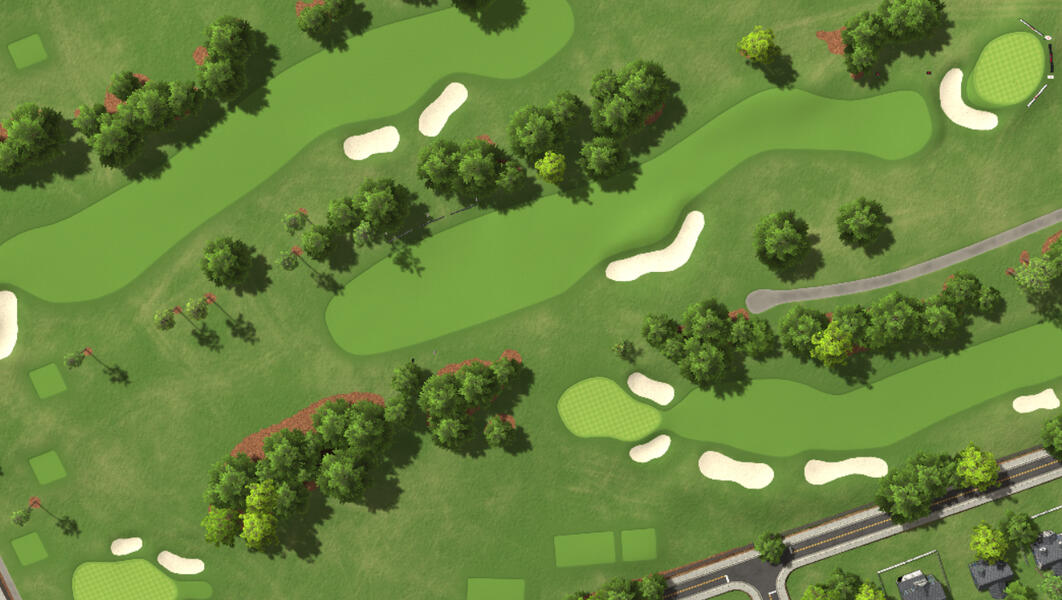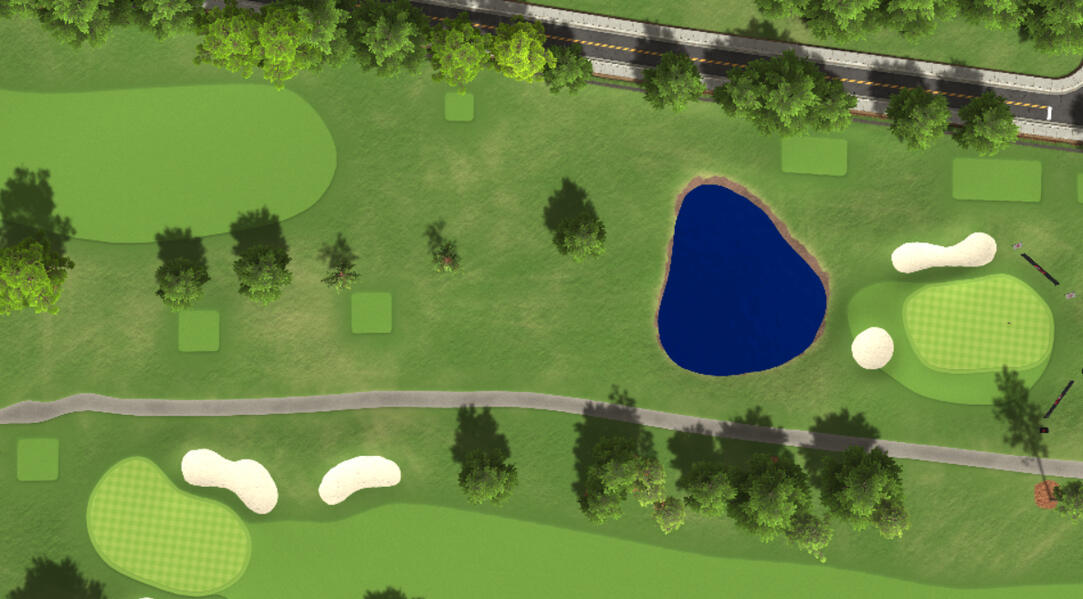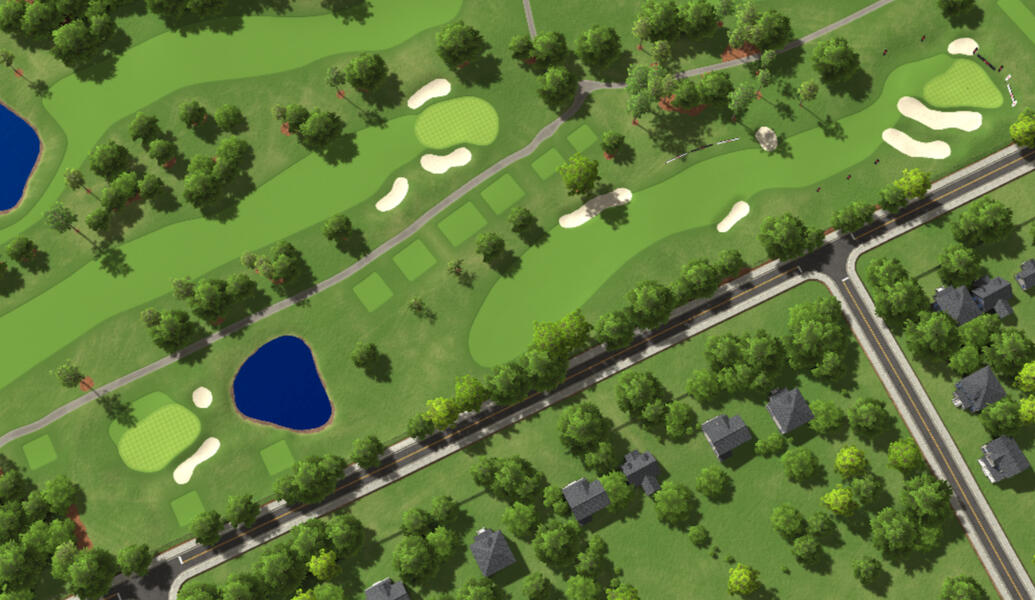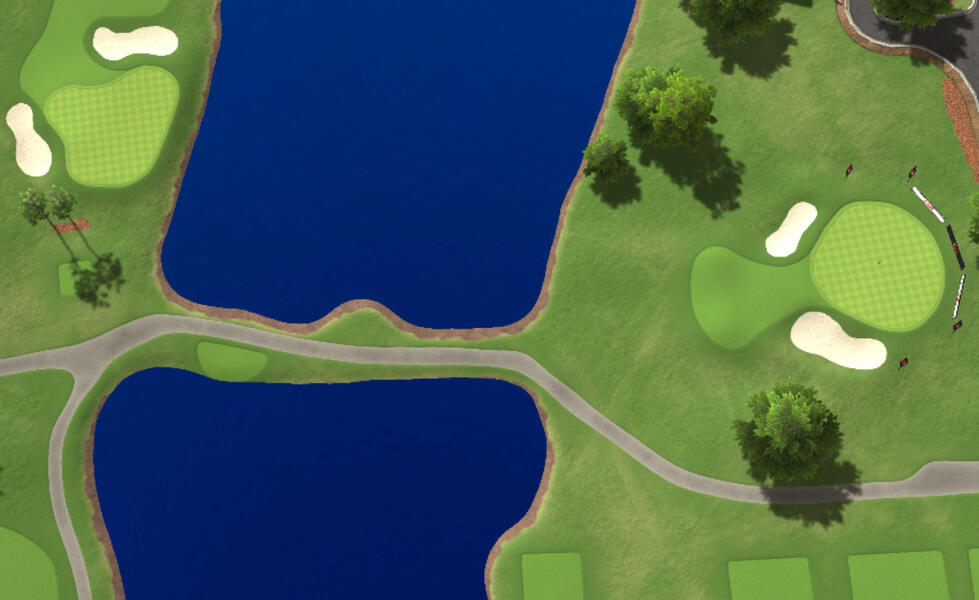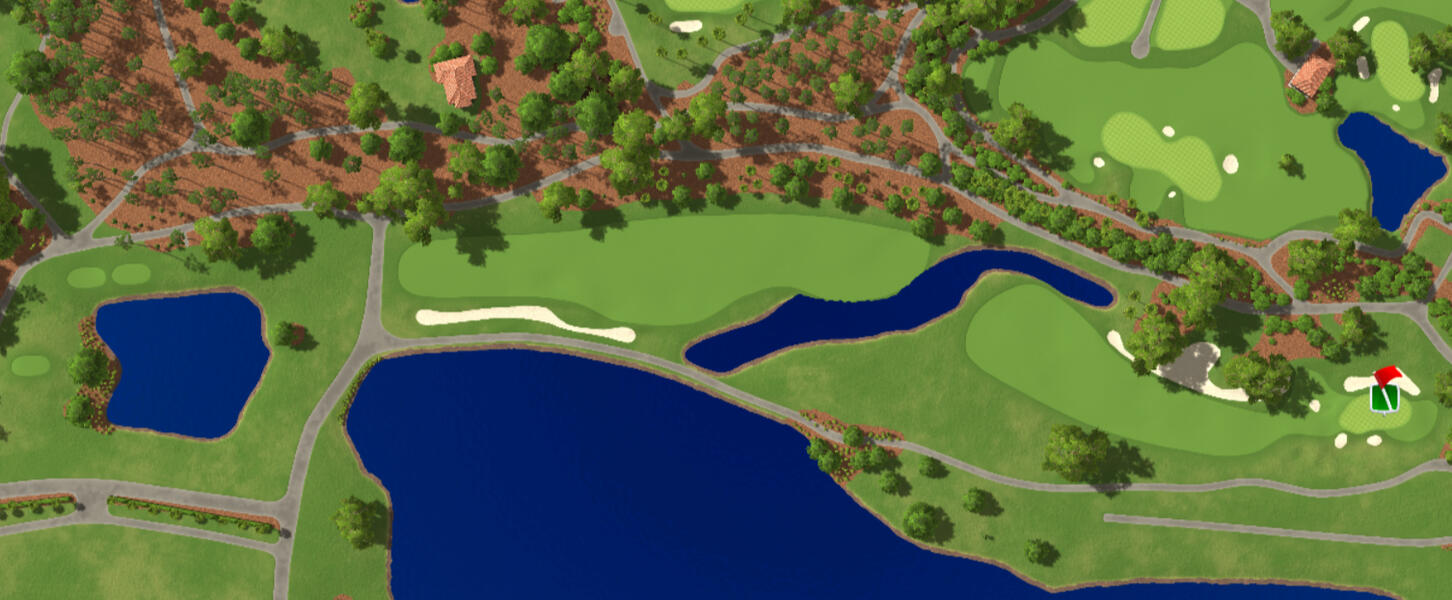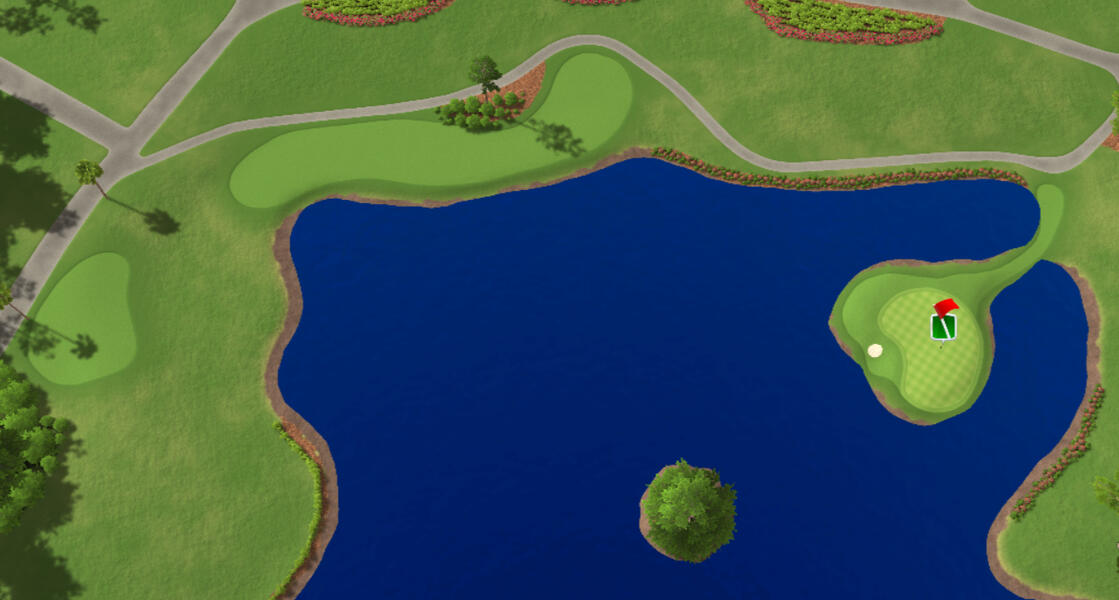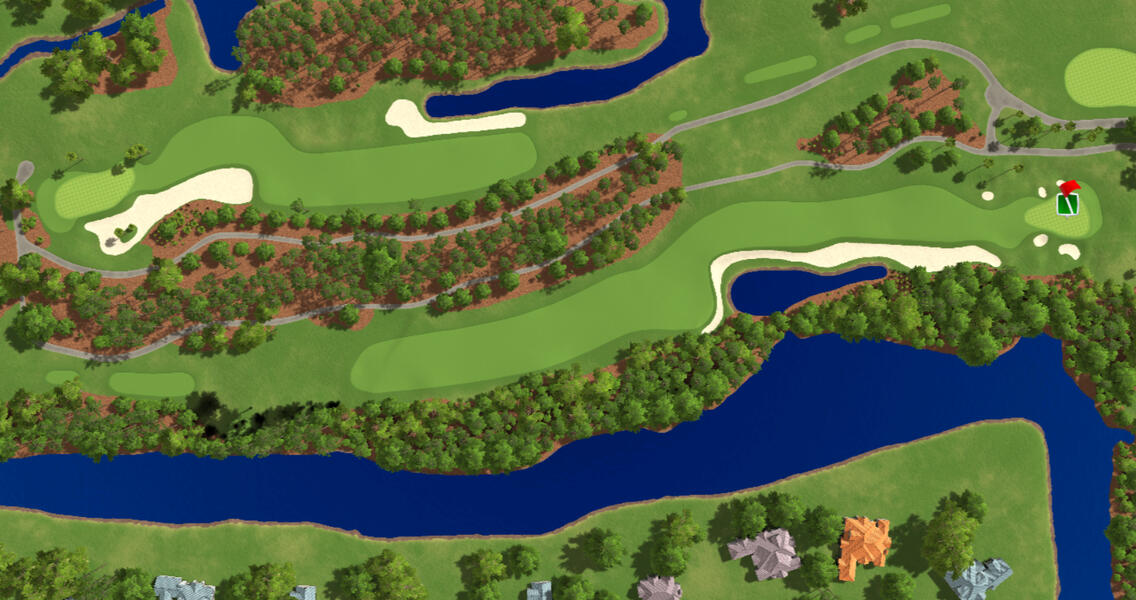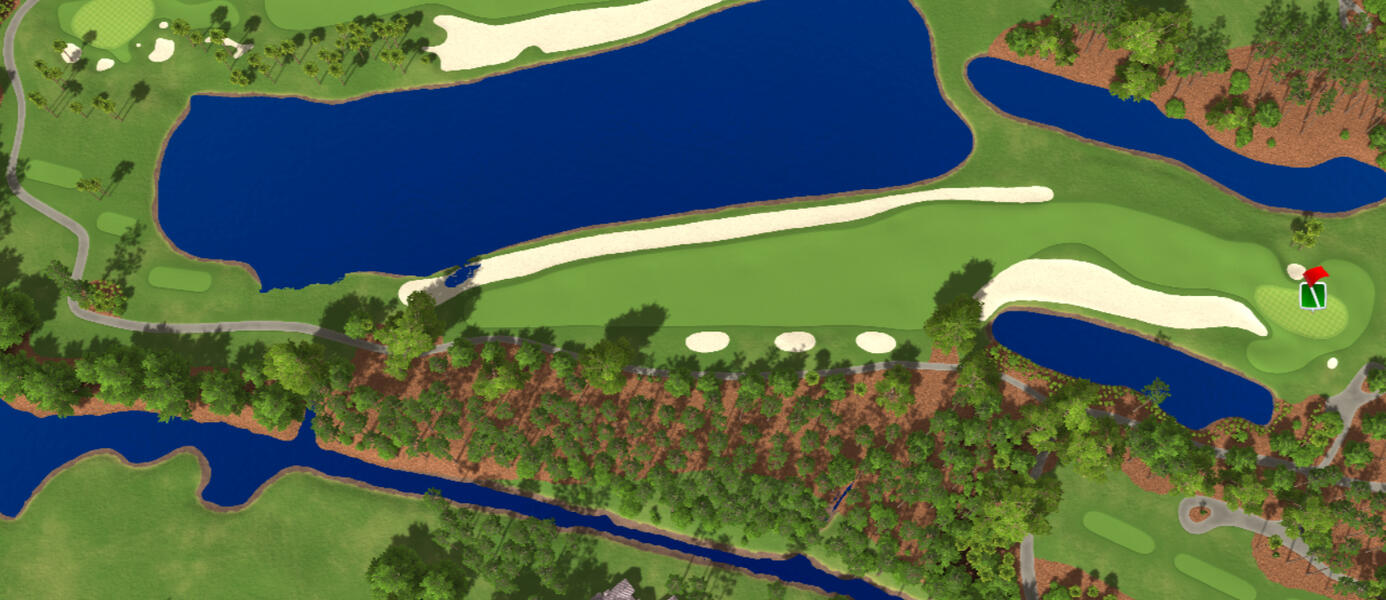Closs Birkett [They/Them]
Level & Game Designer
PROJECTS
- This portfolio is still currently undergoing maintenance following my recent redundancy -I am, however, happy and able to go into more detail on any of the below projects if you'd like to hear or learn more.
Please reach out via my socials or email and let's set up a video call. I’d love to chat more about my processes with you!
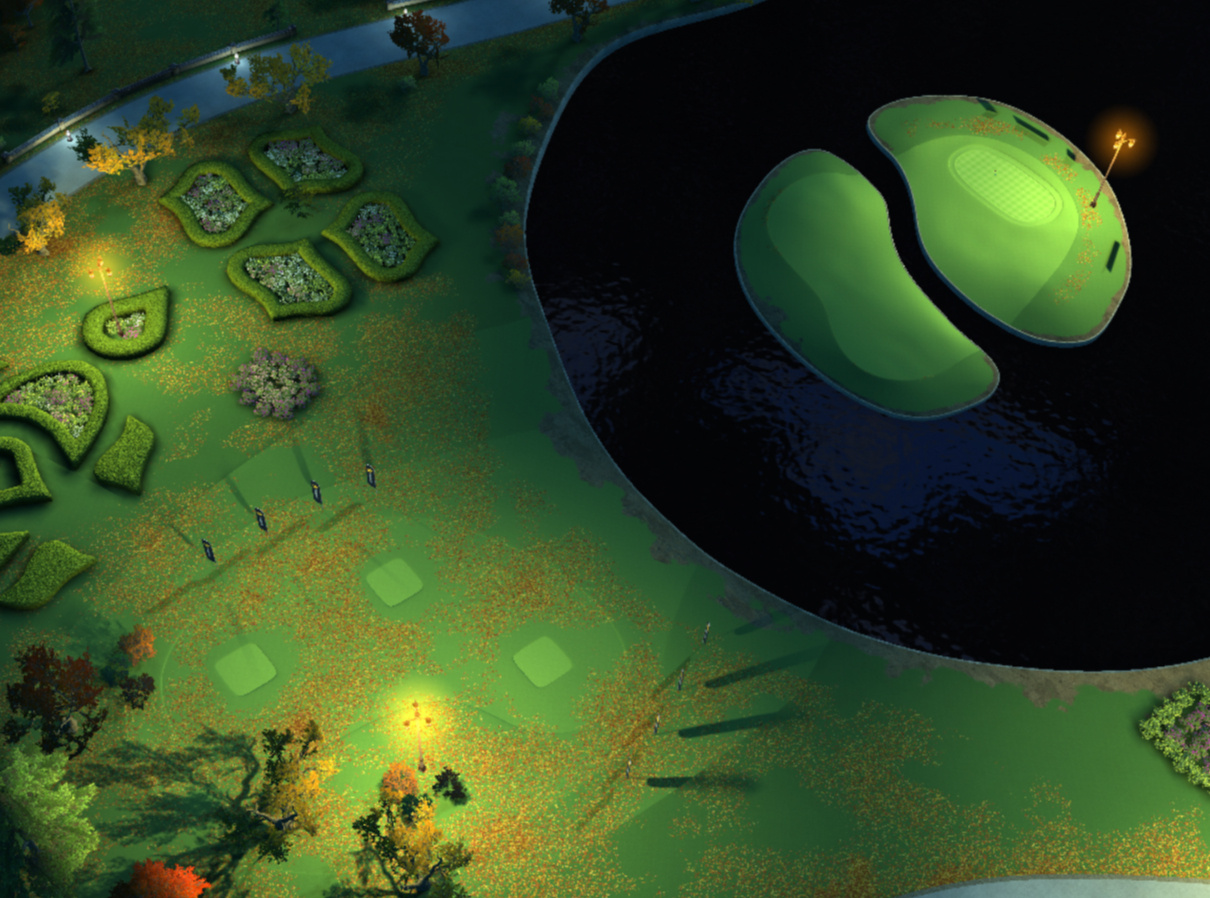
GOLF CLASH - Playdemic | Electronic Arts
April 2017 - July 2025
Playdemic and EA's BAFTA award winning free to play mobile golf game!
Tee off against players worldwide in online shootouts!
POKÉMON FAN GAME
Jan 2024 - Ongoing
A personal project to expand my overall game development skillset!Built in RPG Maker XP using the 'Pokémon Essentials' kit
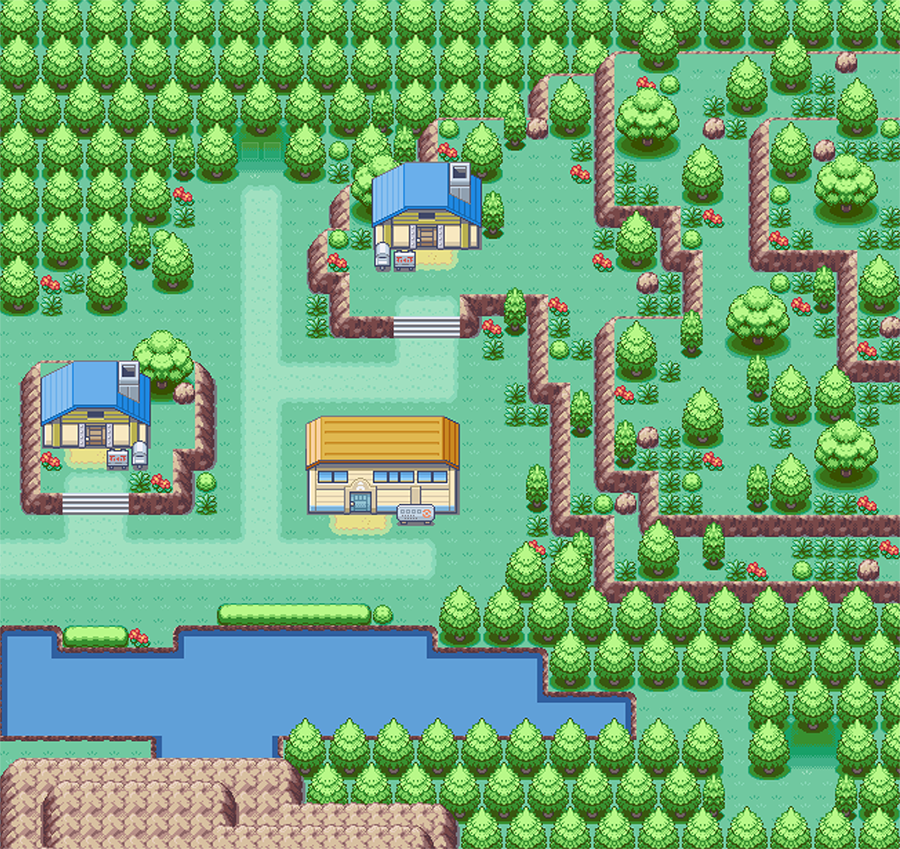
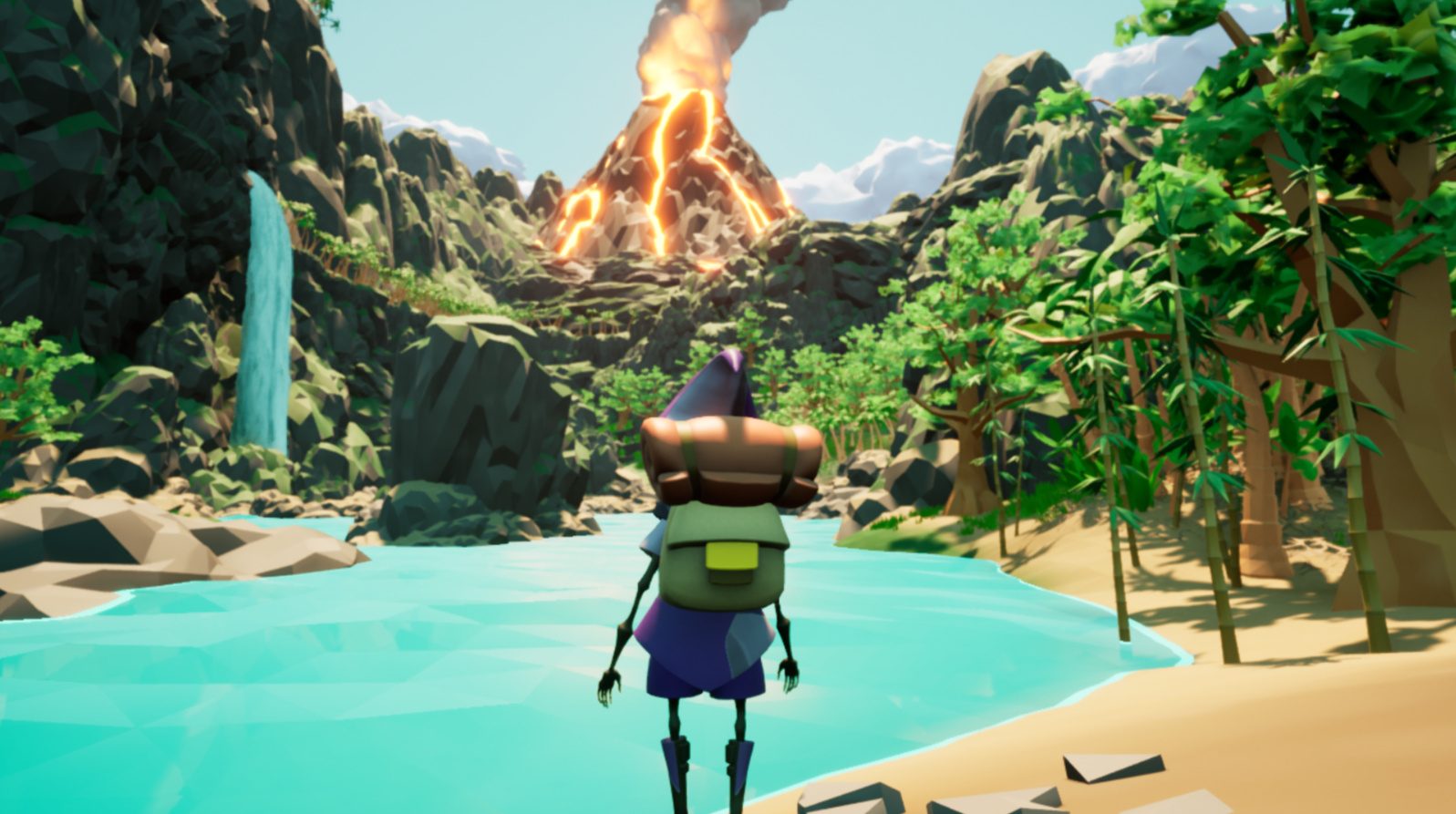
PATHFINDER - Code Coven
December 2022
A week-long personal project built in Unreal Engine 4 on an
'Introduction to Game Making' course with Code Coven!
GUARDIAN TRIALS
September 2020
Top 5 in the 'Wilderness' category for the
PAX Online 2020 'Dungeons & Dragons: Design-a-Dungeon' contest!Built in Manticore Games 'Core' game maker
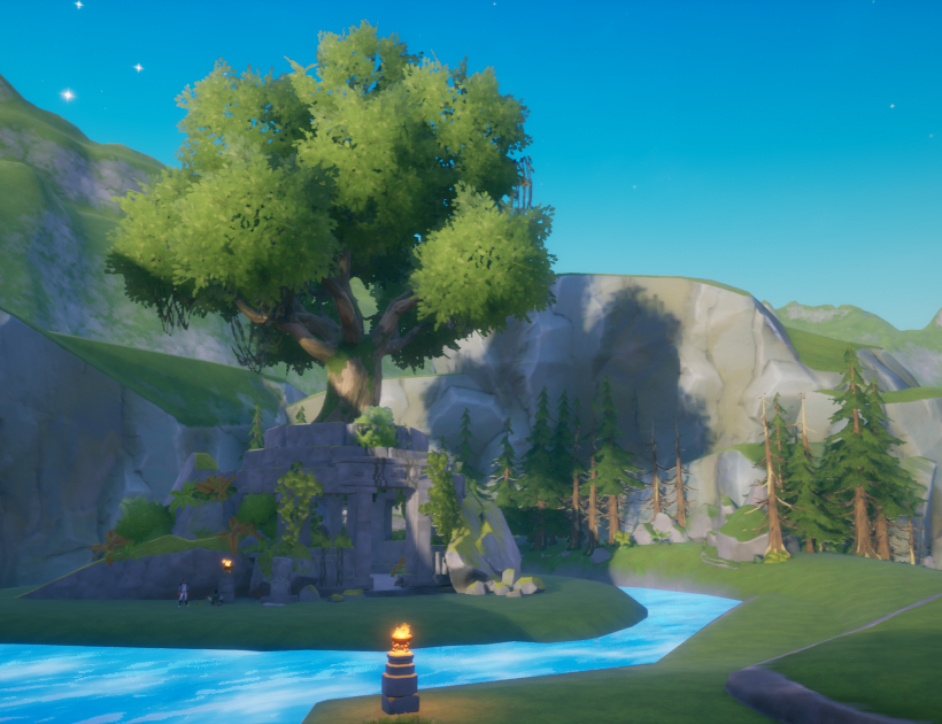
ABOUT ME

Hi there! I'm Closs, my pronouns are they/them. I'm a UK based Level and Game Designer working remotely from Cheshire.I have 8+ years' experience in the games industry with 5+ as a multi-discipline Designer; tackling gameplay features and LiveOps, but specialising primarily in Level Design.I'm passionate and driven to craft exciting, enticing levels and worlds that players from all walks of life can enjoy. I keep diversity, inclusivity, accessibility, and a player-first mindset at the heart of everything I create. I believe that everyone, no matter the skillset or experience, should be able to enjoy games!Much of what I’ve learned about game design has come through self-teaching while working from home, driven by curiosity, persistence, and a genuine love for the craft. There isn't any software or skill I can't pick up and master when I set my mind and heart to the task.When I'm not playing, streaming or making games, you can find me baking all sorts of sweet cakes and cookies, sewing or crafting for cosplay, painting dragon miniatures or getting up to mischief in a number of ongoing D&D campaigns.
I worked on the BAFTA award winning Golf Clash for the past 8 years until the role of
Level Designer at Playdemic was unfortunately made redundant in July 2025 as part of EA layoffs.In that time I'd not only contributed to quality of life and fair play based feature work, but designed 225 unique holes across 16 courses for the game while leading a small, two person Level Design team, of which I'd also onboarded and managed the second Level Designer.My accrued wealth of knowledge of Golf Clash's courses, complex gameplay features and unique mechanics saw me become the main point of contact for many across the different teams. I frequently cross collaborated with Art, Data and QA teams to ensure that new courses were released to a high quality and strict timelines, then worked alongside the LiveOps team to ensure exciting themed tournaments launched smoothly, often running in line with real world global sporting events.Click below to jump directly to my Design Process, Hole Breakdowns or Gallery
GOLF CLASH OVERVIEW
WHAT IS GOLF CLASH?
Golf Clash is a free-to-play, multiplayer mobile game where players compete in golf matches against opponents from around the world in real-time. The game features a variety of courses, club upgrades, and game modes, including 1v1 battles in tour play, tournaments, and solo play options.

TOUR PLAY
Tour Matches have a coin cost to enter for each player, and the winner takes the pot, earning an additional prize chest containing clubcards, balls and other prizes that can be used to unlock and level up gear to use in future matches.Players winning a tour match also earn Trophies, which unlock more challenging tours, as well as contribute to their public trophy score, showcasing to other players their skill.Each tour goes through a Course Rotation every season, switching up the courses that can be found in each tour to keep gameplay fresh and exciting.
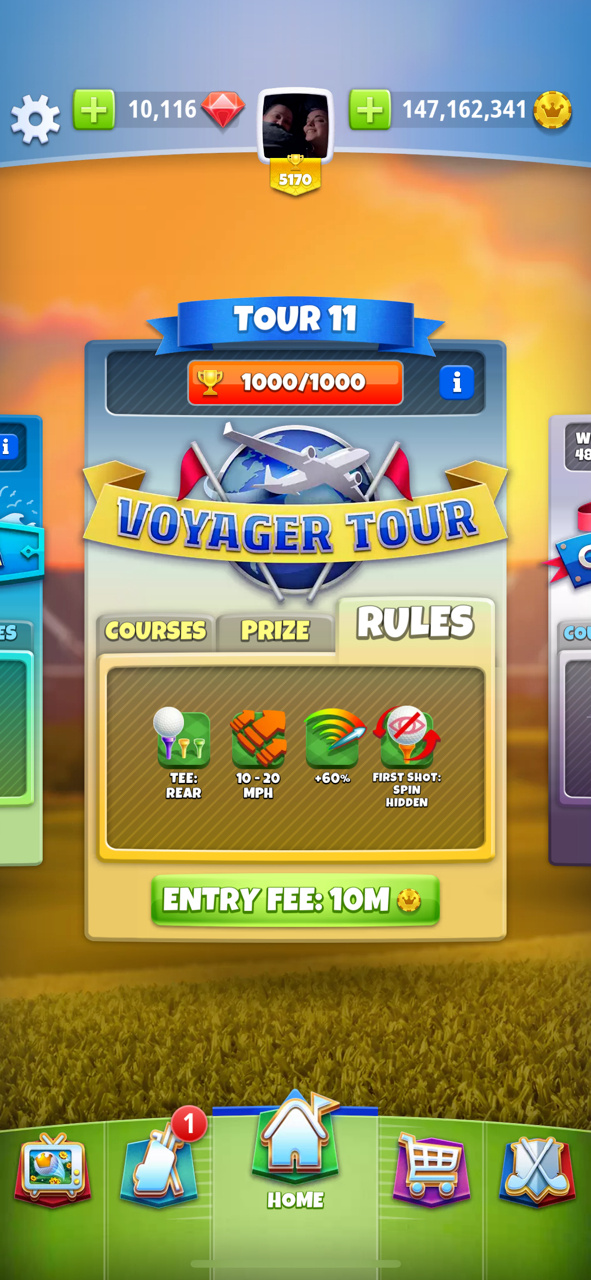
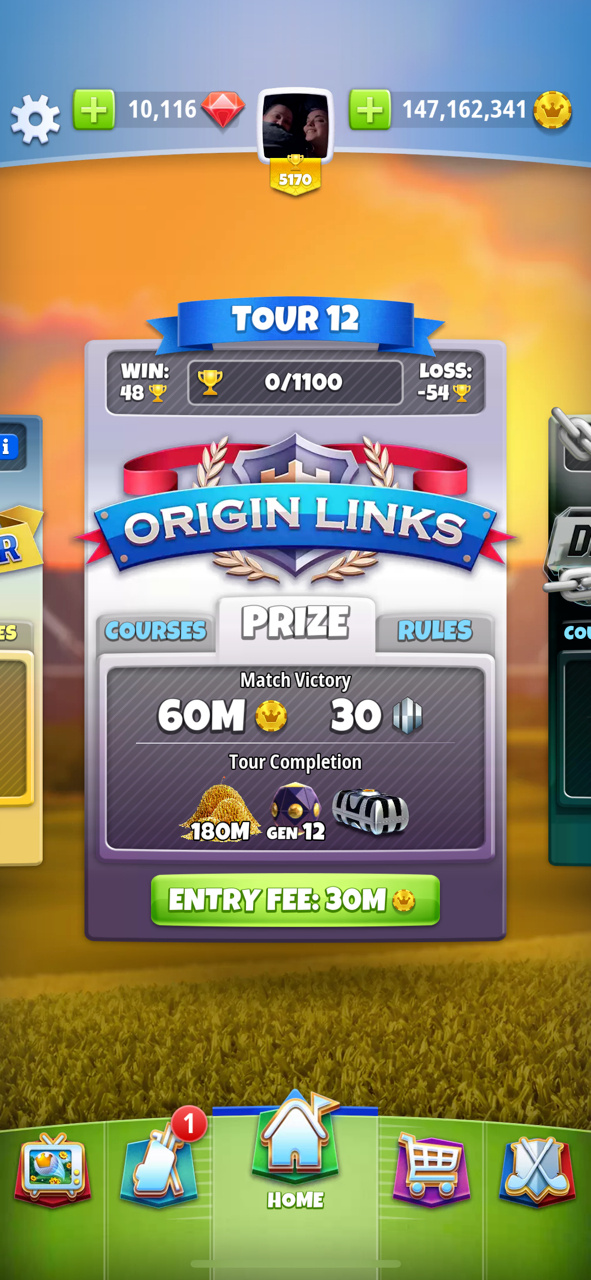
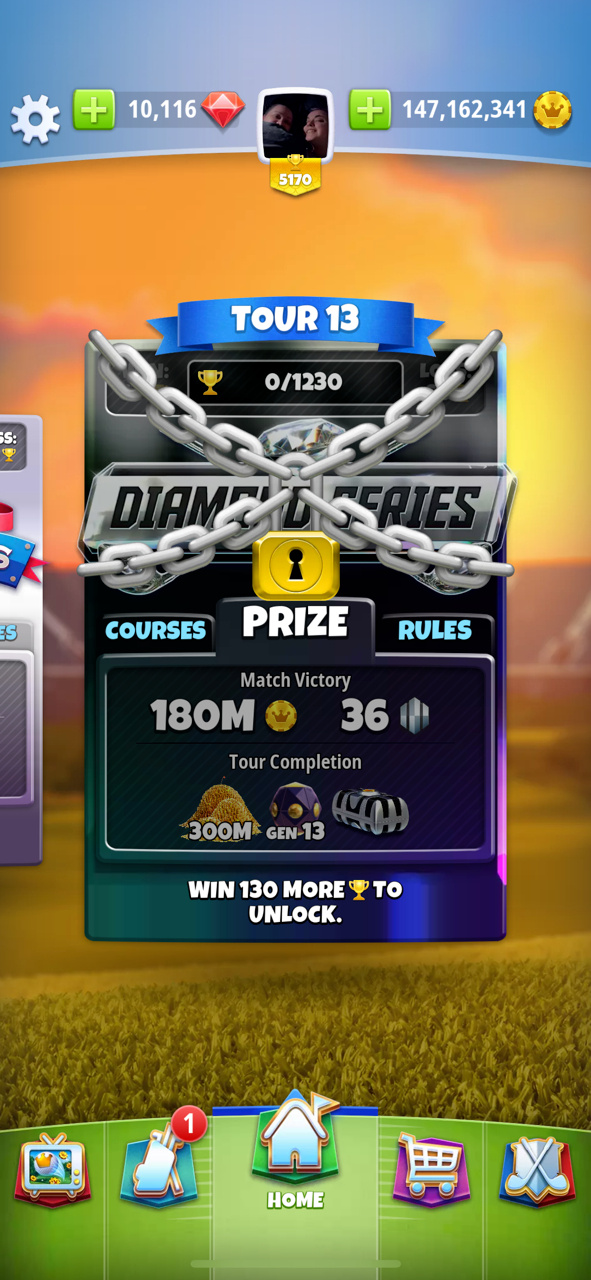
TOURNAMENTS
In Tournaments players compete for the lowest score and climb the tournament leaderboard in order to earn a huge pool of rewards, the size of which dependant on their finishing position. Tournaments are split up into different difficulty levels and skill sub-tiers, each with their own cost to enter.Tournaments also sometimes feature modifiers that put a spin on the challenge in some way; be it steady or strong winds, an alternate pin position or increased rewards.


EQUIPMENT & PLAYER SKILL
Golf Clash has an immense array of golf clubs for players to choose from, ranging from low power and high accuracy or vice versa, long or short ball guides, top spin, back spin and curl.There is also a huge catalogue of golf balls, each with their own unique stats as well!Club's stats are varied by their rarity and club level. It's up to players win matches and earn prize chests containing clubcards, which they can use alongside a coin cost to level up their clubs!
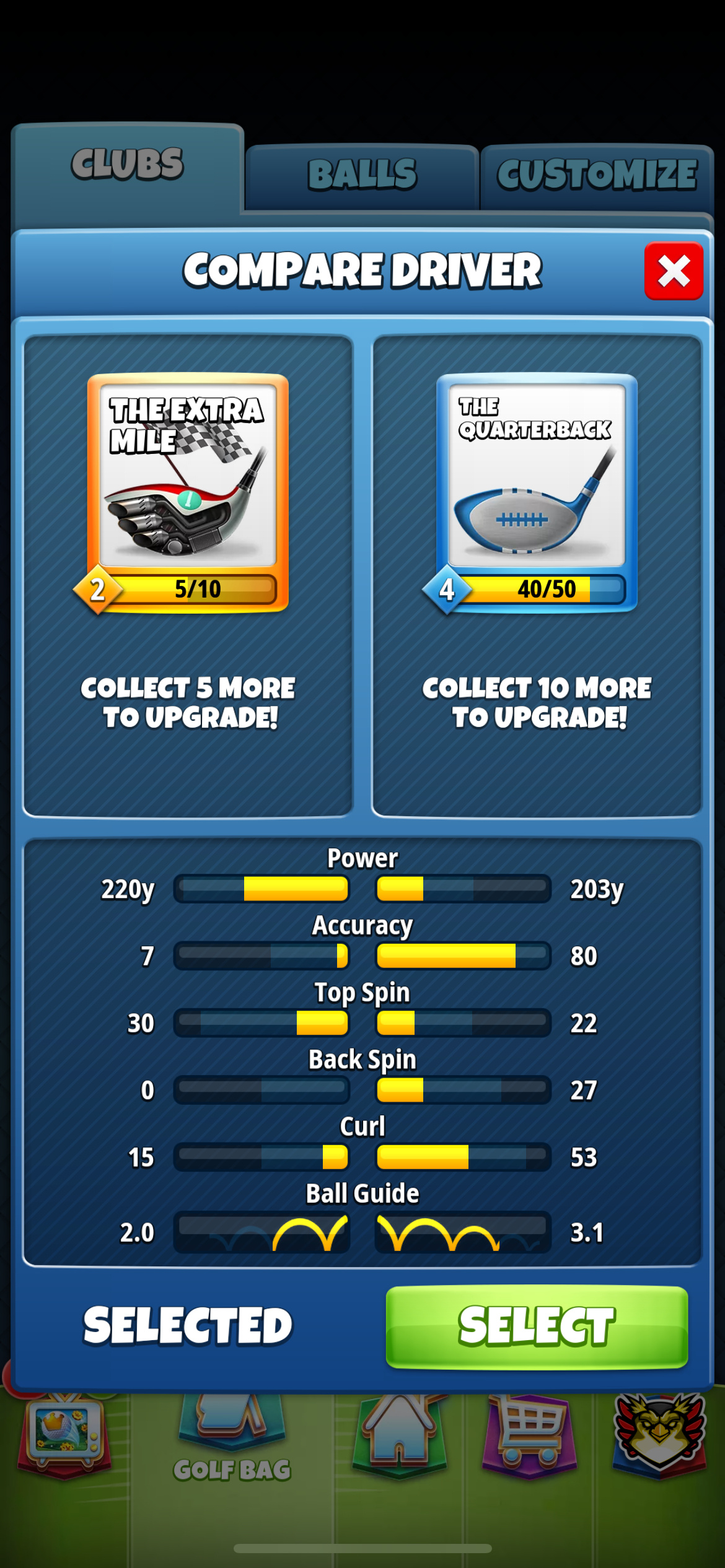
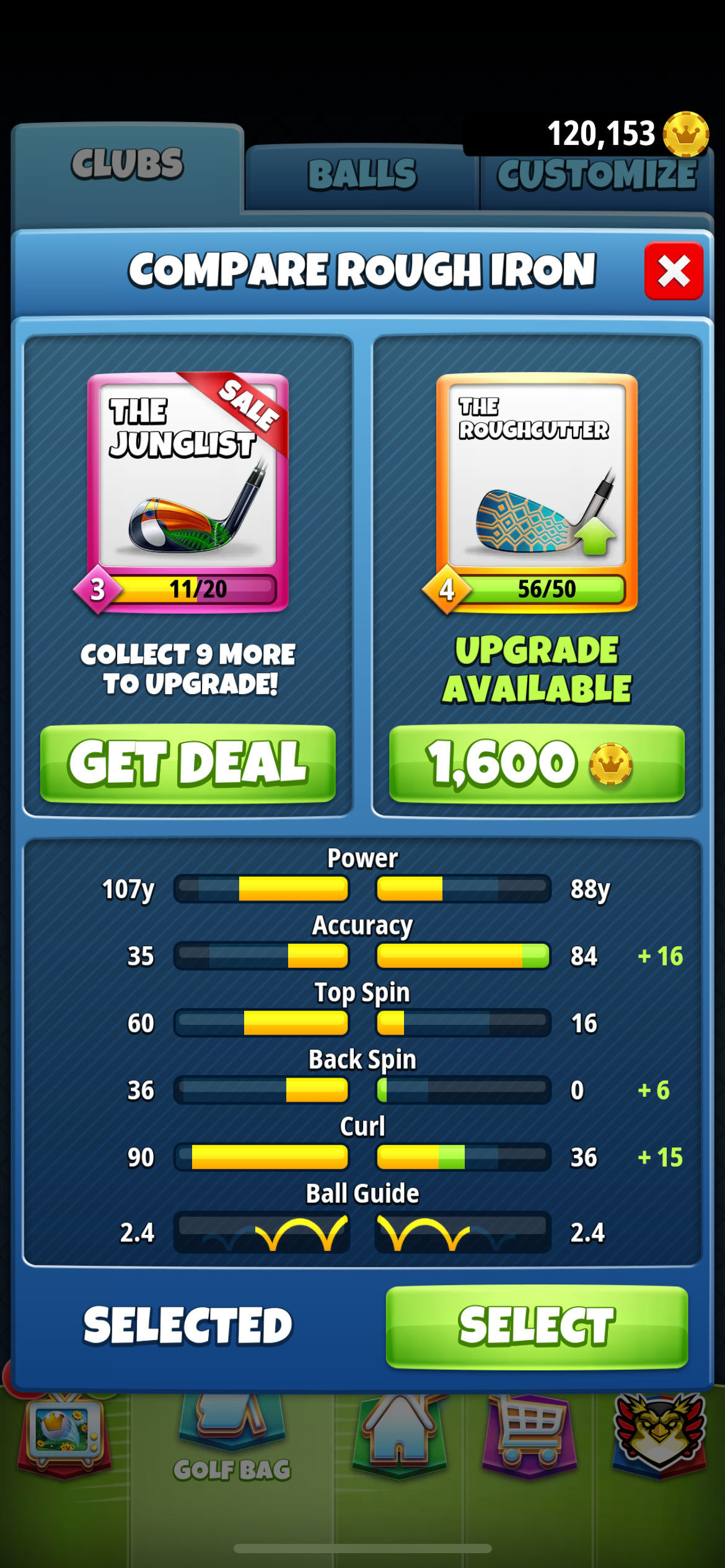
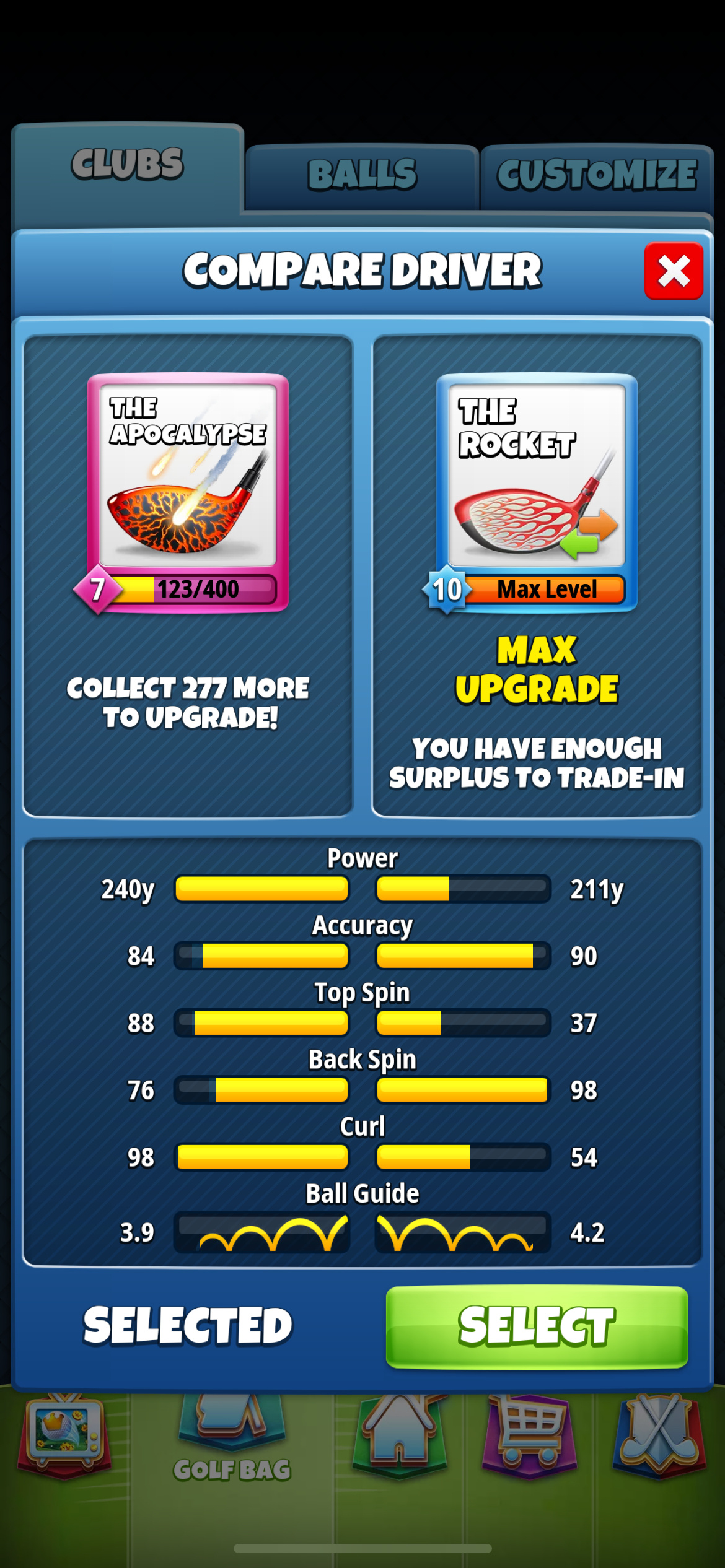
THE DESIGN PROCESS
USER CENTRED & ITERATIVE DESIGN
In order to design great courses that are fun for everyone, I need to take everything mentioned above and more into consideration. Tour and Tournament play, club and ball variables, alongside the vast array of player skillsets, wants and needs, needs to be kept at the core of consideration during the design process. Whether it's a players first match in Tour 1, or they are years into the game playing a Master Tournament, it's important to ensure that everyone can have fun on the course!
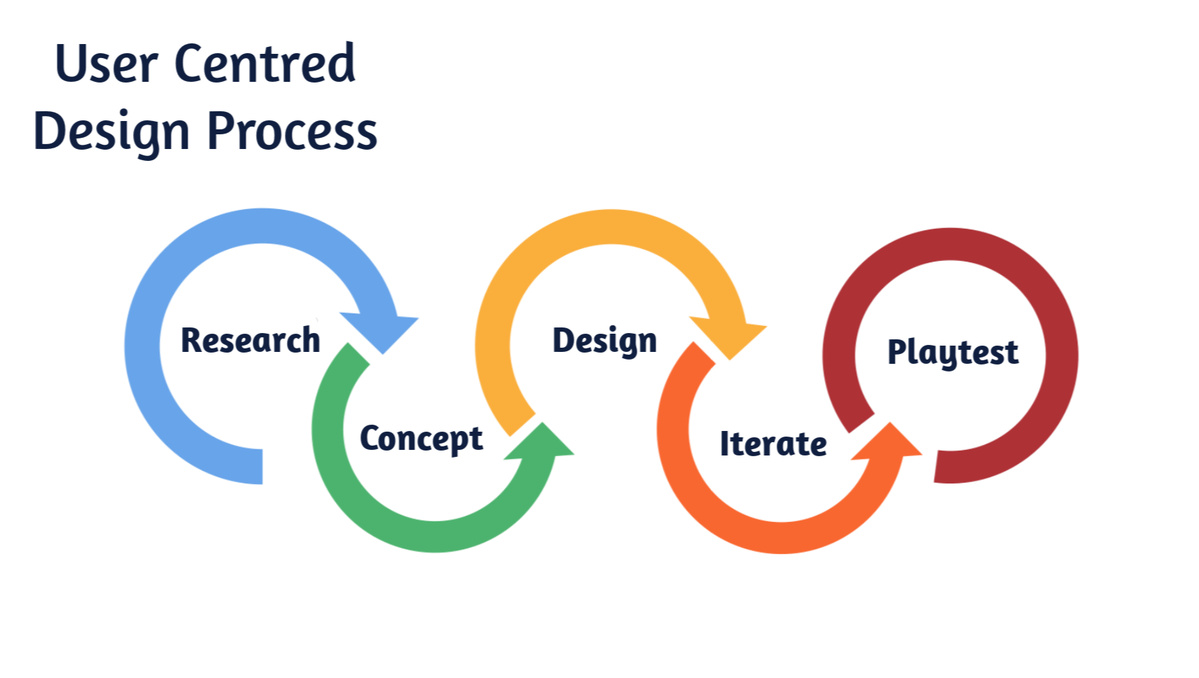
Designing courses relies heavily on repeated playtesting and iteration to make sure the holes feel fun to play! This step is imperative to ensuring a hole’s success and I spent countless hours, not only perfecting my skills as a master player, but also ensuring I never lost sight of how it feels to be a new rookie with little to no knowledge of the game.Playtesting frequently during the design process ensured that any areas of a hole that didn't feel right were immediately found and fixed, leading to fewer gameplay related bugs at the QA stage and a more enjoyable level to players overall.
1. RESEARCH
ORIGINAL & LICENCED COURSES
Golf Clash's (GC's) huge library of levels is divided into Original Fantasy Courses, and Licenced Real World Courses, the latter officially licenced in partnership with the Professional Golf Association (PGA).Designing Original courses means a lot of work in the pre-production phase with the Art and Design teams to come up with a unique theme, location and key hazard types. We fill out a Miro mood board with research and themes to align both teams on the brief.For example, a links (coastal) course would feature flatter yet rugged shorelines, lots of sand (bunkers) and water hazards with exposure to high winds. It would play very differently to a greener park landscape with undulating terrain and curving (dogleg) fairways sheltered from the wind by forests of trees.Similar accommodations need to be accounted for with Licenced courses, but since the location, themes and hazards are predetermined, the design challenge comes from researching and replicating the real world hole as accurately as possible, while also keeping the gameplay exciting on what end up usually being simple layouts, built for more realistic real world golfer skills (there's no wind reduction or reduced needle speed stats in real life!)This often means having to make subtle changes to the shapes and sizes of various parts of the course; large enough to make a difference in a players approach based on the equipment they're using, but not so large that the course becomes unrecognisable from its real world counterpart.
2. CONCEPT & DESIGN
With the research to hand, the next stage involves blocking out individual holes for a course using Adobe Photoshop and Autodesk 3DS Max. This part of the process varies slightly depending on whether I am designing for an Original course or a Licenced one, but ultimately follow similar steps.Using dedicated colour channels, all the parts of a course are painted out, creating the fairways, hazards and greens of each hole, carefully created to meet both the brief and the needs of the players.This image file is combined with a model plane in 3DS Max, where elevation and undulation is added for additional gameplay challenges. Trees and other hazards, as well as the pin and tee's for each hole are also added at this stage.
3. ITERATION & PLAYTESTING
Once an initial design has been fleshed out, the files are exported to our game engine and built into playable levels for playtesting.Playtesting happens for all 3 tee positions, and with a large number of different club loadouts, each specially made to mimic the most frequently used clubs for each skill tier of player.This means when designing and playtesting, I'm doing so with every skill tier of player in mind at the same time. If at any point, a particular shot doesn't play well, feel challenging enough or simply isn't fun, I go back to Photoshop and Max to reiterate the design, re-export and build the level again for further testing. This makes up the largest portion of the design process.During this stage, playtesting is also offered to wider disciplines in the studio and external community contractors for additional feedback. I collate feedback in forms and then use this to further iterate the level from these unique points of view.
EXAMPLE | LICENCED COURSE DESIGN
Redesigning a real-world PGA course and its individual holes means first looking in detail at the real hole; noting placements of hazards amongst the fairways, terrain undulation and where the tees and pin are situated.I do this by looking at course flyovers such as this one from USA Today, course maps and images provided by the PGA and Google Maps satellite images.
Next is blocking out these placements in Adobe Photoshop in a texture file. We use specific colour channels to map each texture to a terrain type on a flat plane in 3DS Max using a specialised pipeline;Green = the Fairways/Tee boxes
Red = the Bunkers
Blue = the Water
Cyan = the Green
Black = the Rough
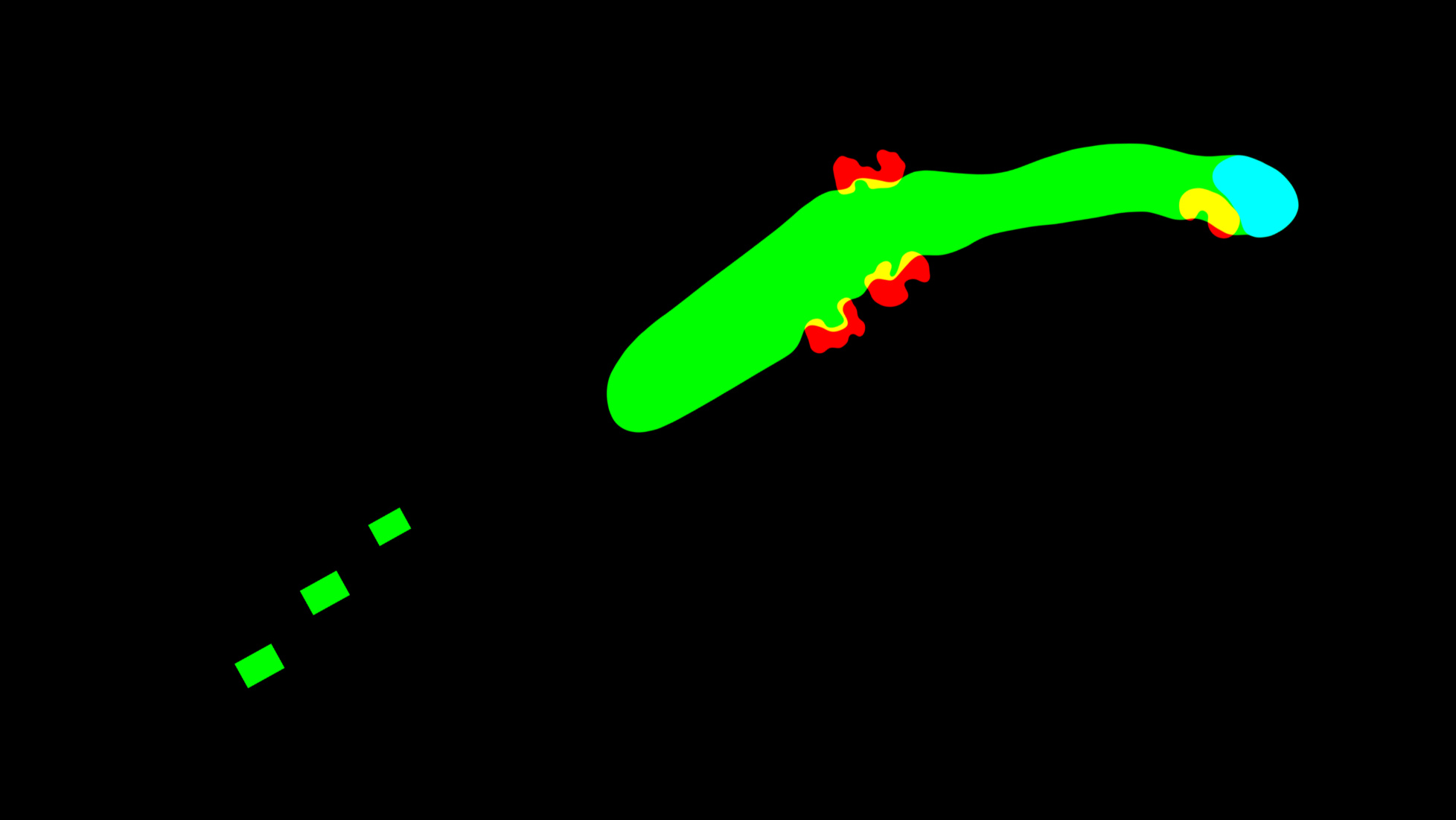
Recreated example of a PS texture file
Recreated example of a 3DSM model file
In Max I then edit the terrain with the sculpting tools, set the placement of the Rookie, Pro/Expert and Master tees, the Pin and the Driver Target objects (where the players ring target will naturally sit, though they can, and often change this themselves when setting up their shot) as well as any gameplay dependant trees that may serve as blockers or hazards.I then export the file to our engine, the Idea's Engine for playtesting and iterating.
At the end of the design process, the environment artists populate the finished gameplay scene with more trees, buildings, ad boards and other decorations.
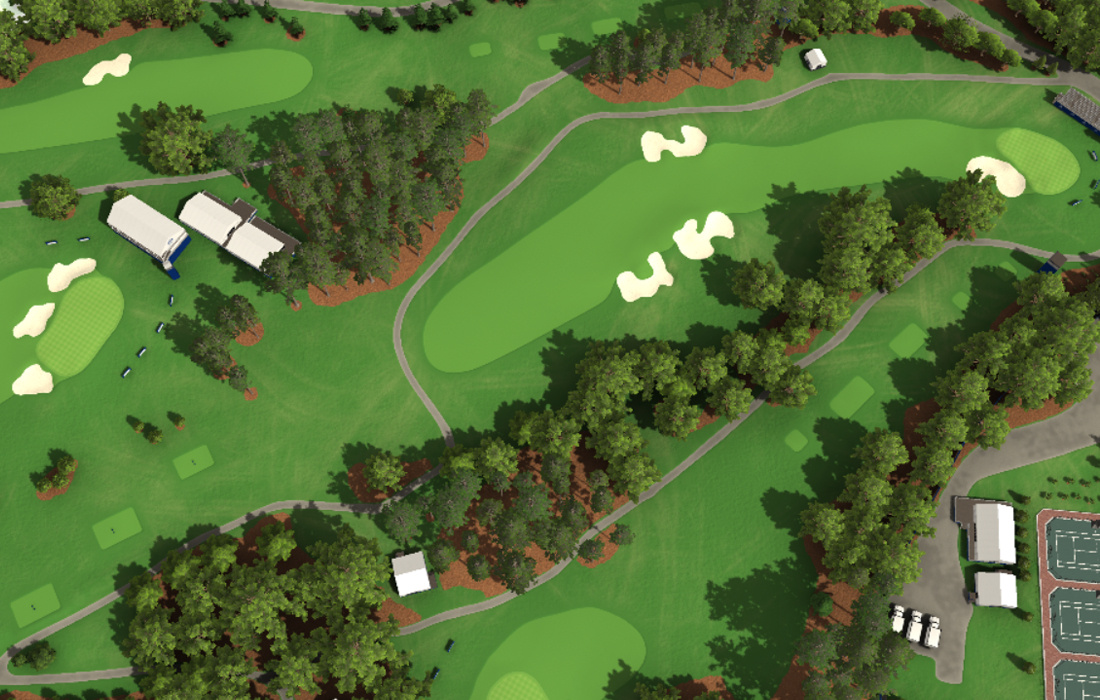
Screenshot of final populated scene in-engine
EXAMPLE | ORIGINAL COURSE DESIGN
Designing an Original course is the same as a Licenced course from a pipeline perspective; Textures are painted in Photoshop to create fairways, greens and hazards. Undulation is added in Max directly, then these scenes are exported into the game engine for playtesting and further iterations...

...but first, the Design and Art teams create a brief board focusing on a location or theme that the course should be based on. This aligns both teams on not only how the course should look from an envinronment standpoint, but also what to expect from the environment in terms of gameplay mechanics.For this example we wanted a course in Mexico featuring ancient Mayan Temples and branching paths of varying heights through dense forests.
I had a lot more freedom to create exciting splitting routes in the Original Courses, as Golf Clash has arcade-like gameplay features that let players perform impressive and impossible shots that the constraints of real world physics wouldn't allow.Green = the Fairways/Tee boxes
Red = the Bunkers
Blue = the Water
Cyan = the Green
Black = the Rough
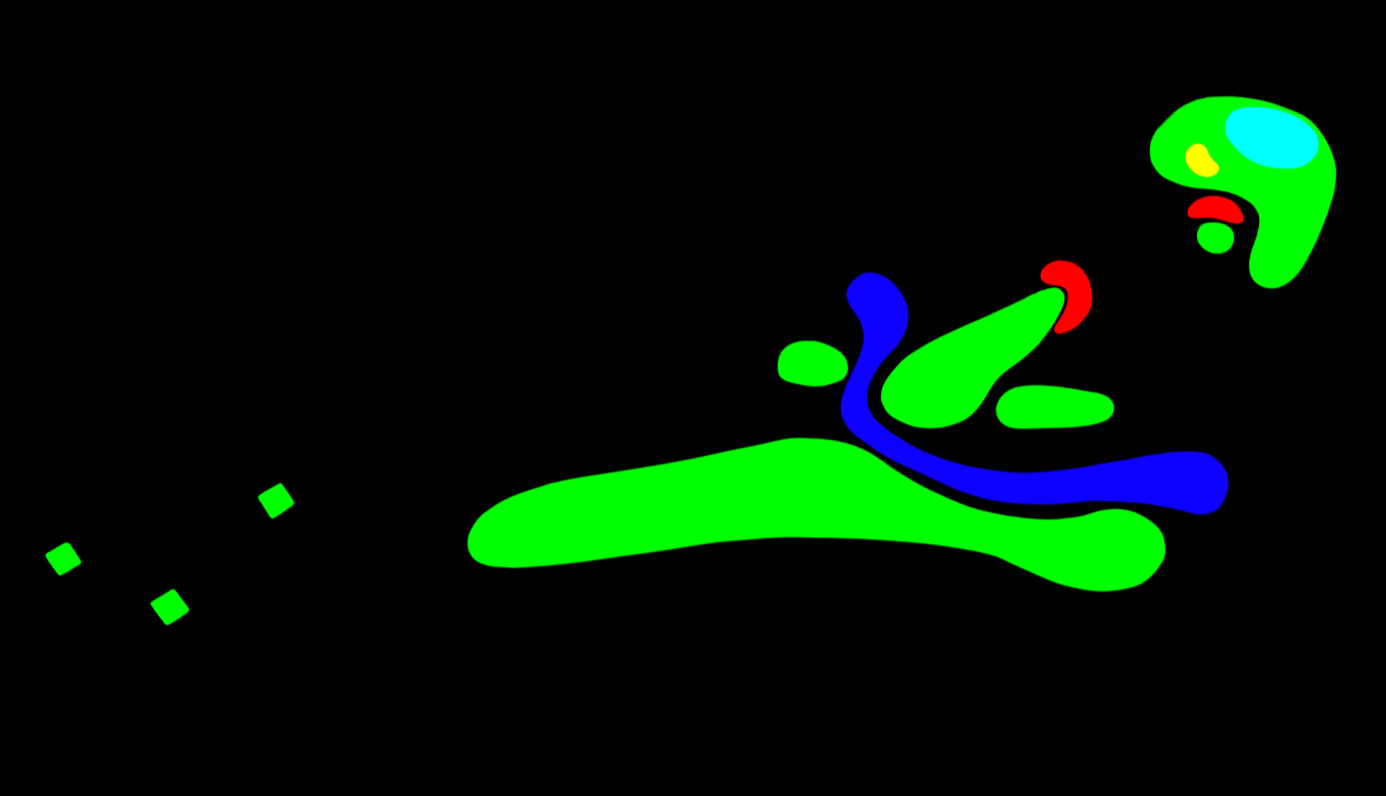
Recreated example of a PS texture file

Recreated example of a 3DSM model file
Use navigation arrows to cycle through shot options
Even on seemingly simple holes, I ensured that there were multiple routes a player could take at every skill level, both high and low in risk vs reward, gated by obstacles and designed with the games wind system in mind so that players can take safe, longer routes for a surefire par or birdie, or risk a tricky, overpowered shot to get closer to the pin and land a more impressive score.
HOLE BREAKDOWN EXAMPLES
In-engine flyover
Licenced Hole - Quail Hollow (PGA) - 18 hole course
Hole 05 - Par 4
A recreation of the famous PGA Quail Hollow course in Charlotte, North Carolina, USA.Hole 5 features a right bending dogleg, slight undulation to the fairway and choice placements of bunkers around the bend point and covering the front of the green. This adds difficulty to players wanting to utilise curl or sidespin to drive around the dogleg, and seek opportunity for an optimal Eagle chip in.
Use the navigation arrows to view design breakdown notes for each shot
In-engine flyover
Original Hole - Yongsan Gardens - 9 hole course
Hole 4b - Par 4
An original course based on both urban and rural areas in South Korea's city of Seoul.Hole 4b features split paths, each ending in an approach to the green which sits in the middle of a pond, with an overhanging statement tree providing a unique challenge to a direct approach on the pin.
We wanted to combine glowing Seoul city skylines with autumnal temple scenery and unique overhanging trees seen in Changdeokgung Palace.Moonlight tours of the palace and secret gardens are offered to tourists, so the night time theme worked really well here and gave us a welcome change from the bright summer daytime courses we usually focused on.

Use the navigation arrows to view design breakdown notes for each shot
GALLERY
Here is just a small number of some of my favourite designs from a range of different courses;
both Original Fantasy Courses and Licenced PGA Courses.
DESIGN STUDIES
| COMING SOON |
CV
